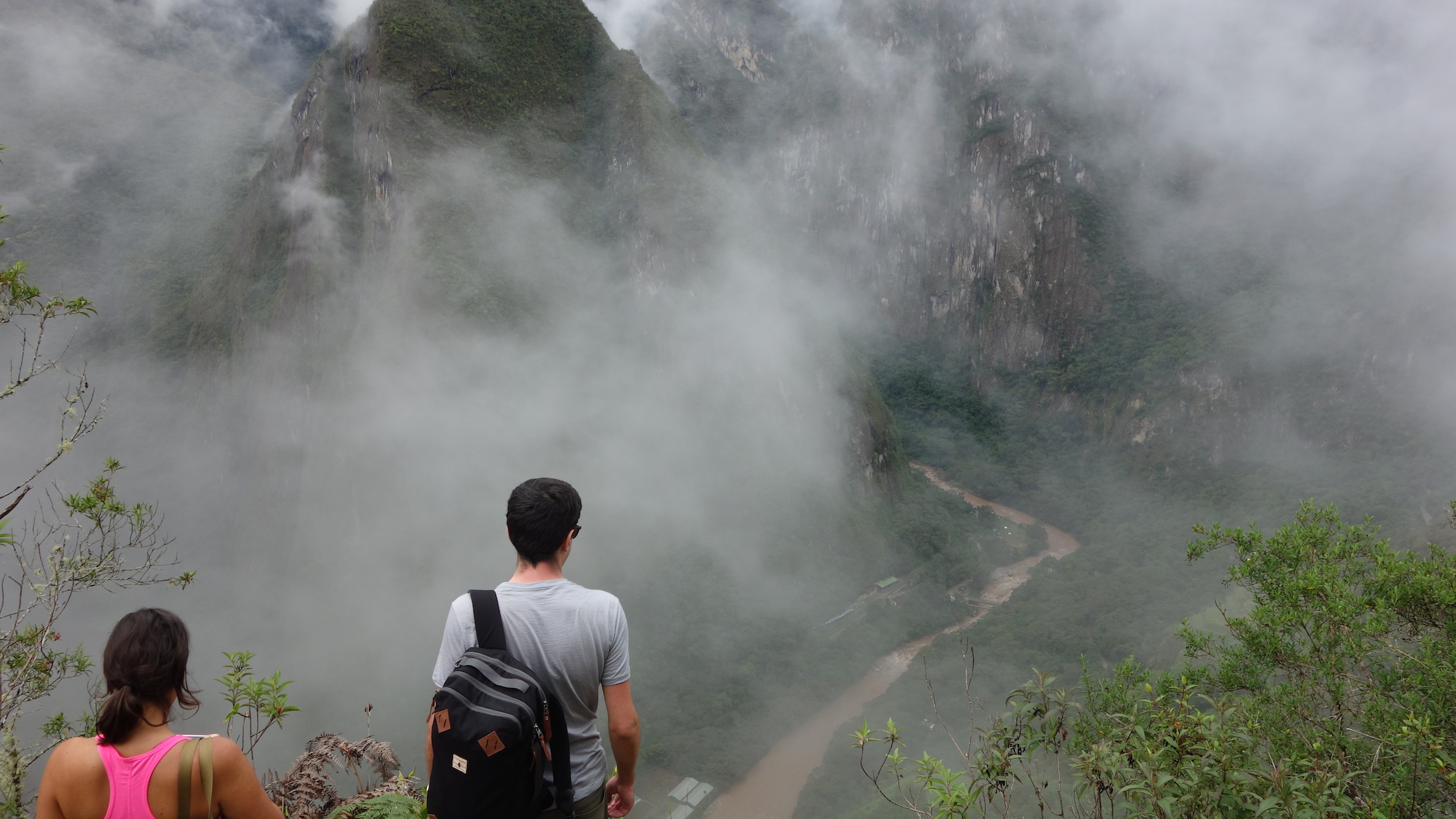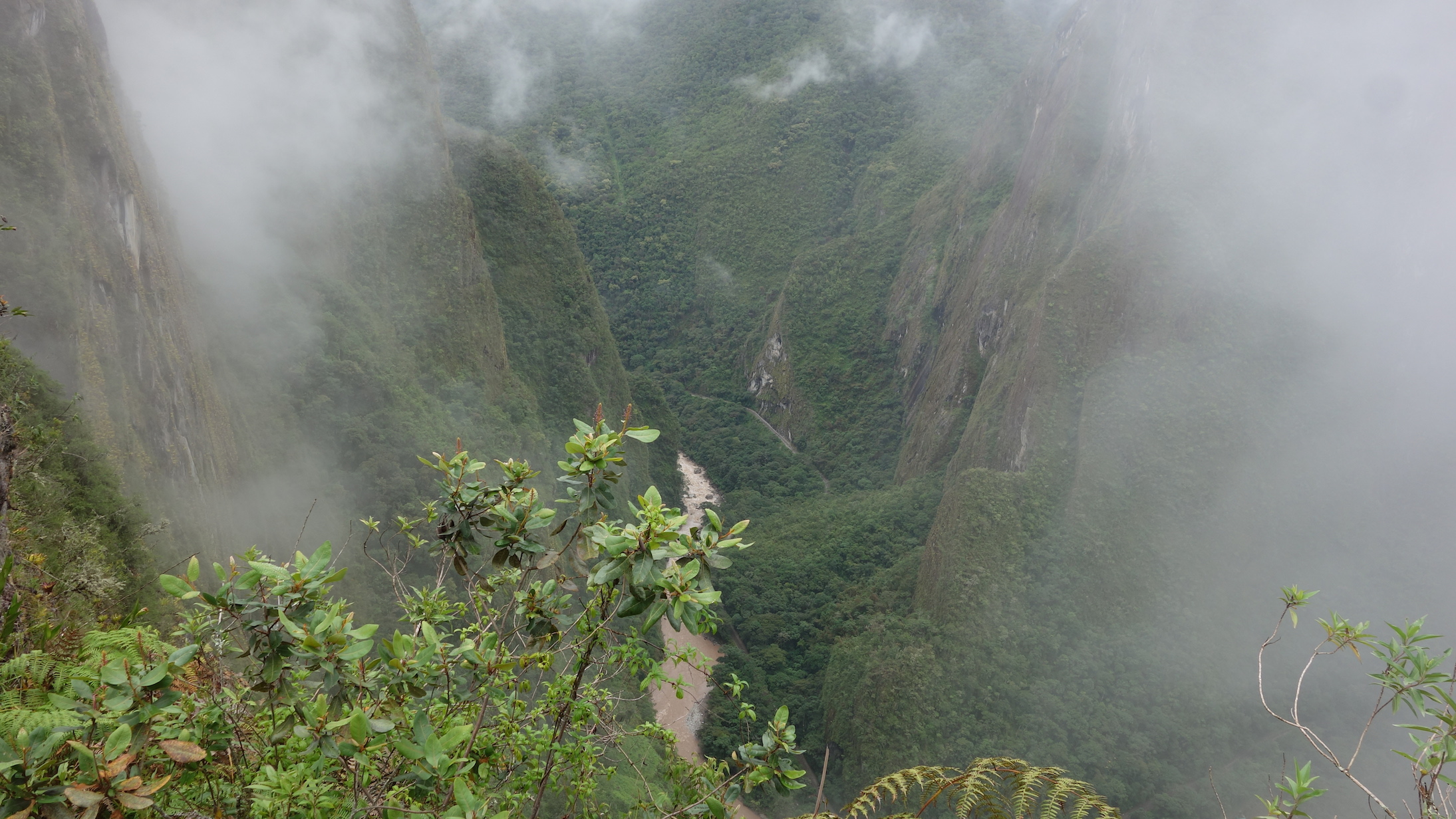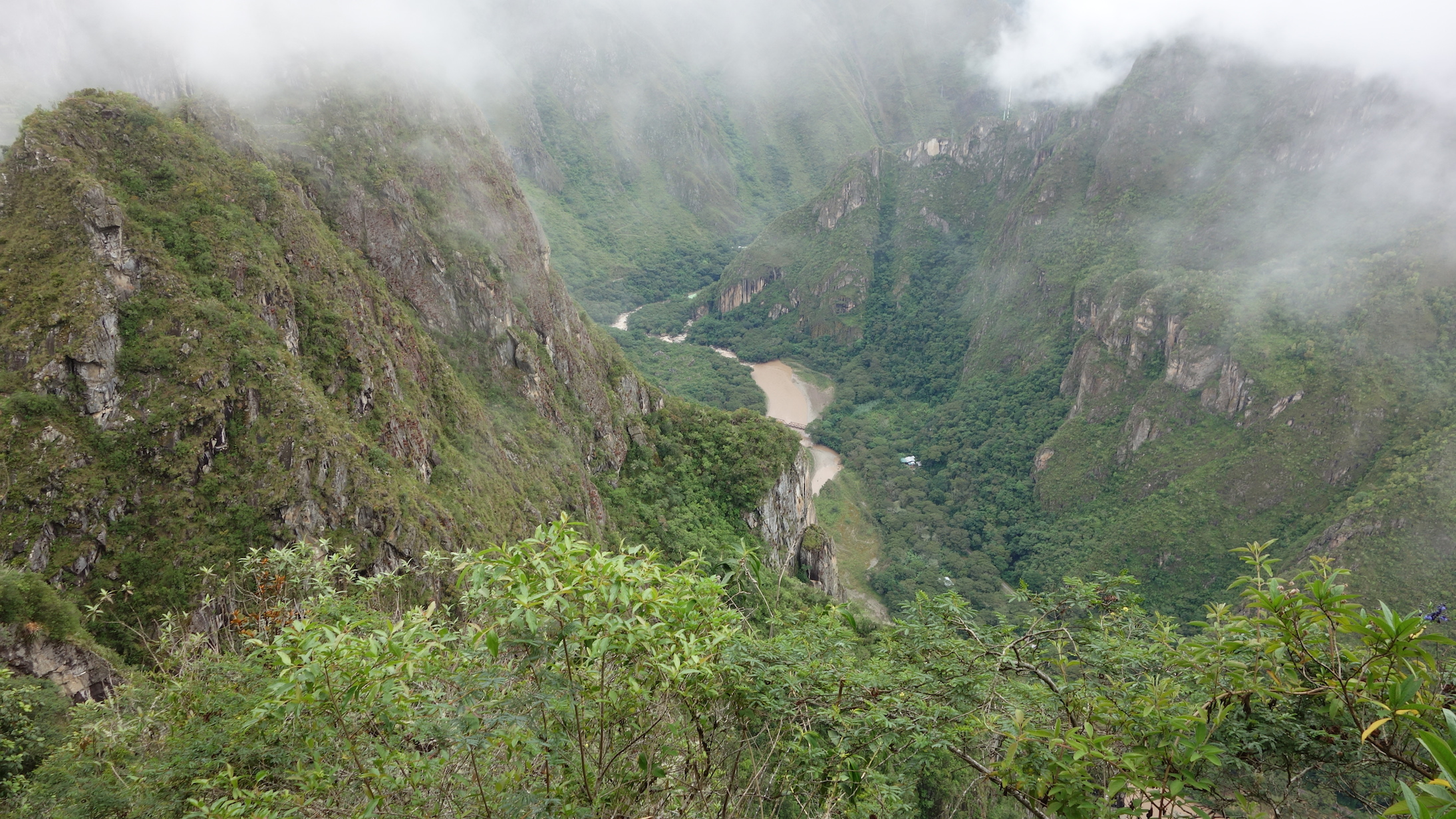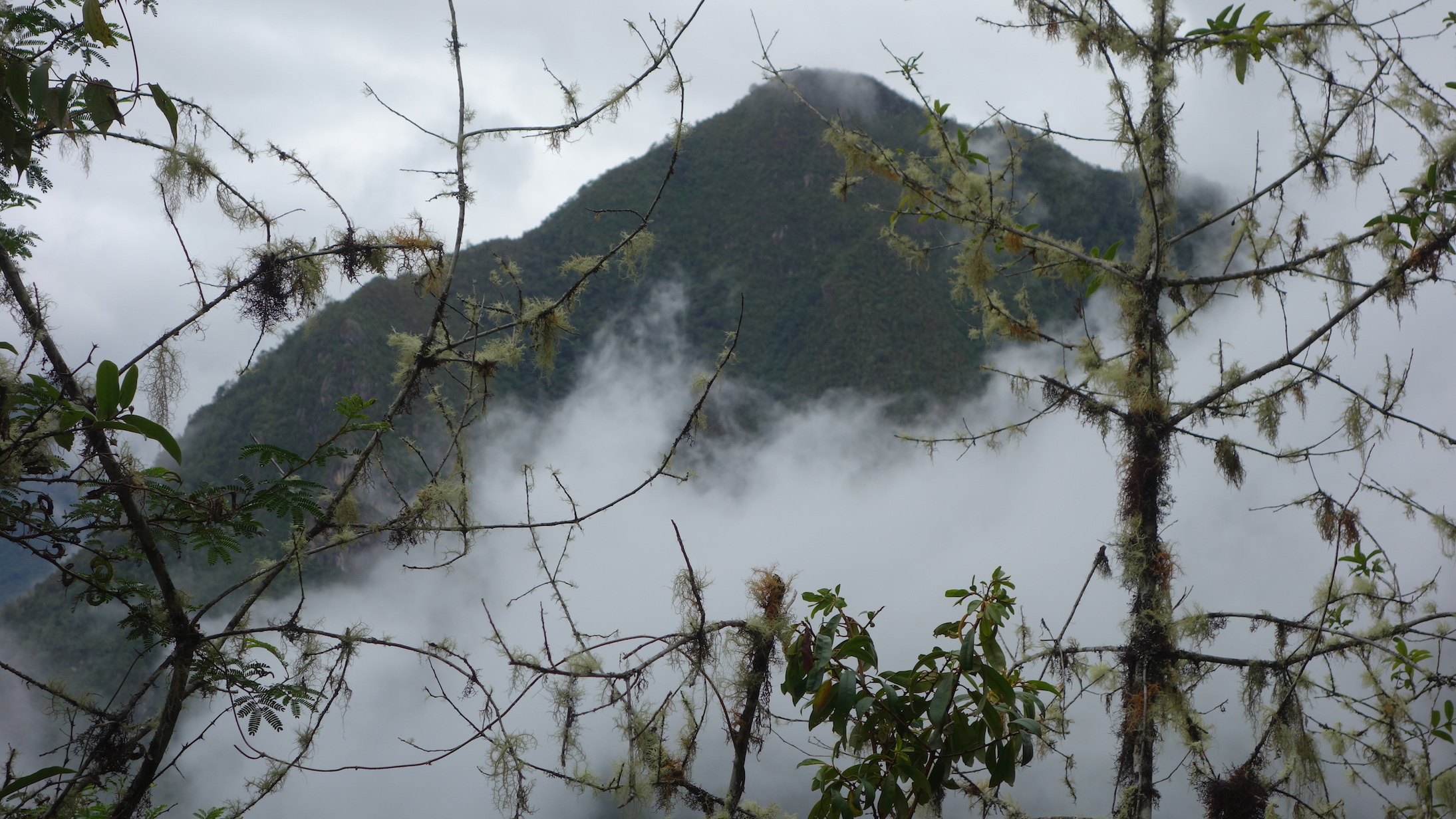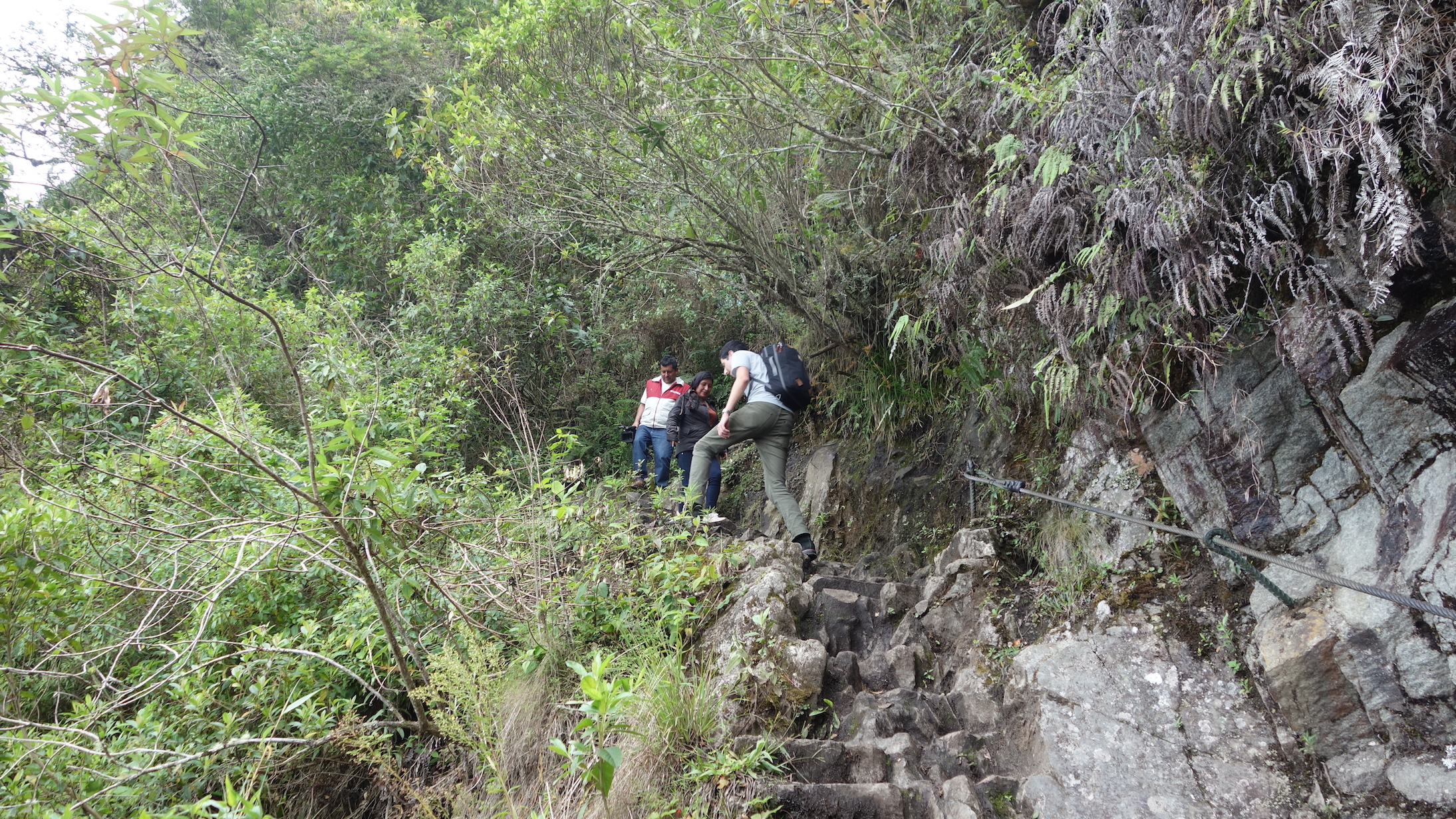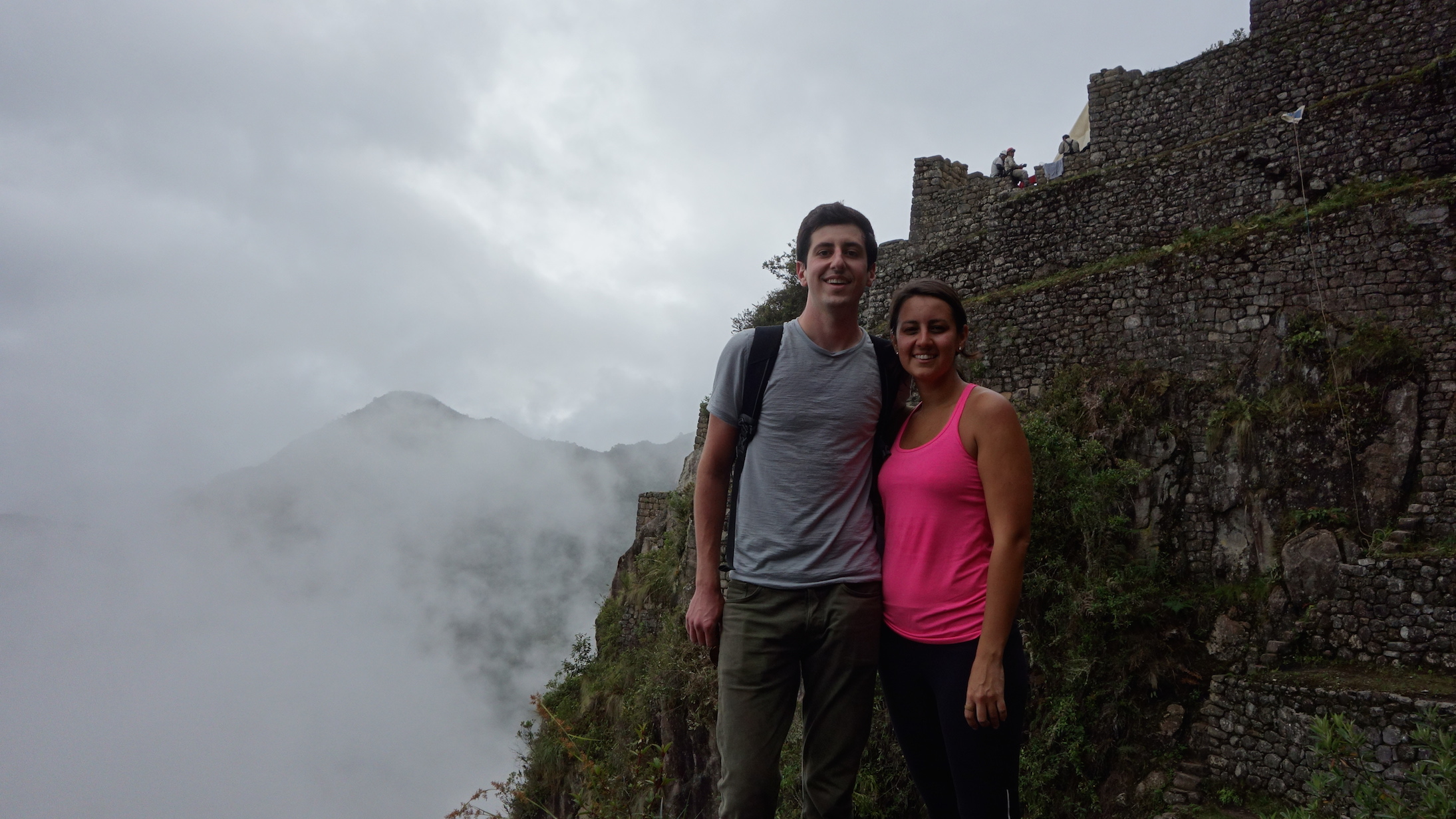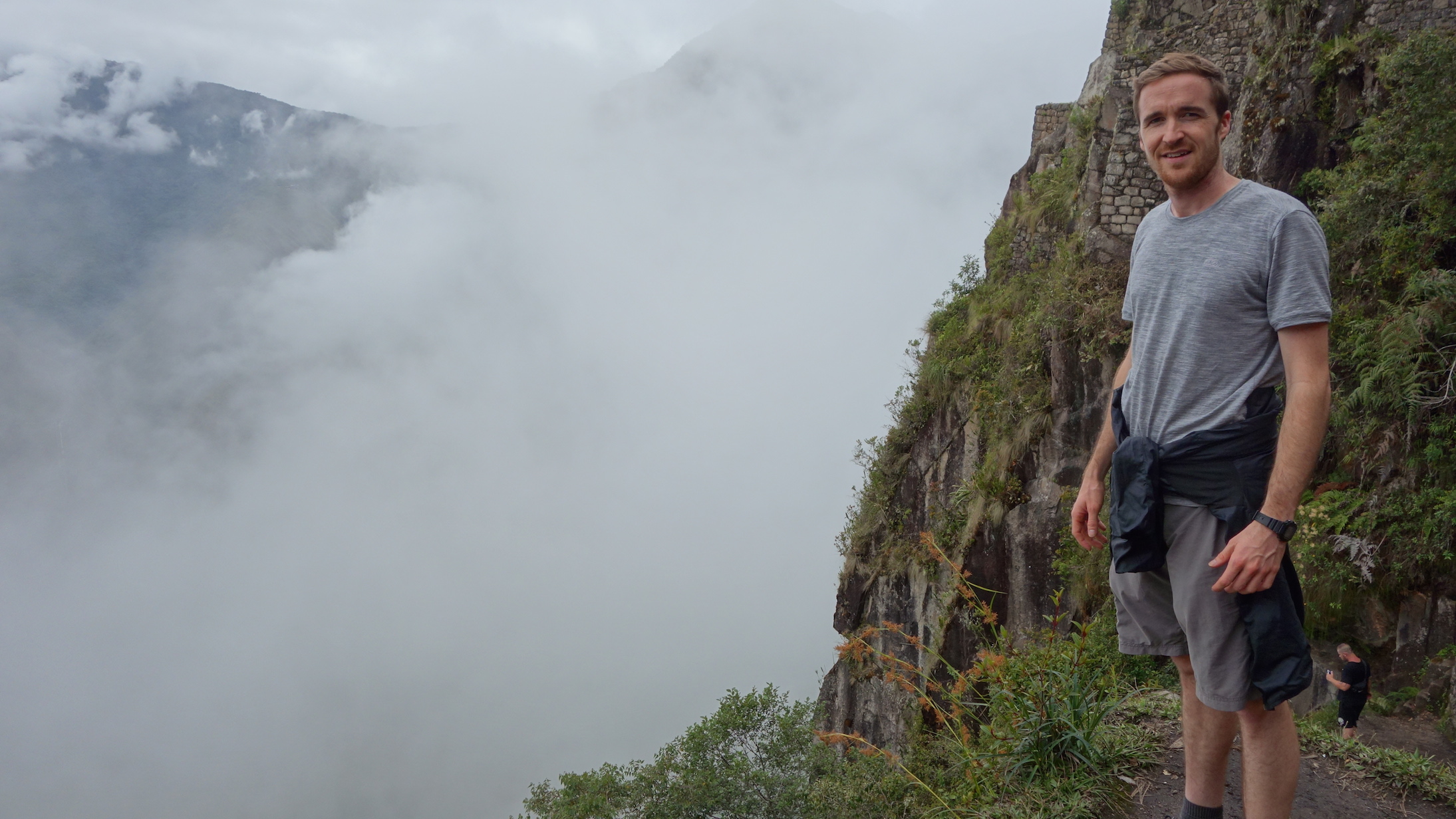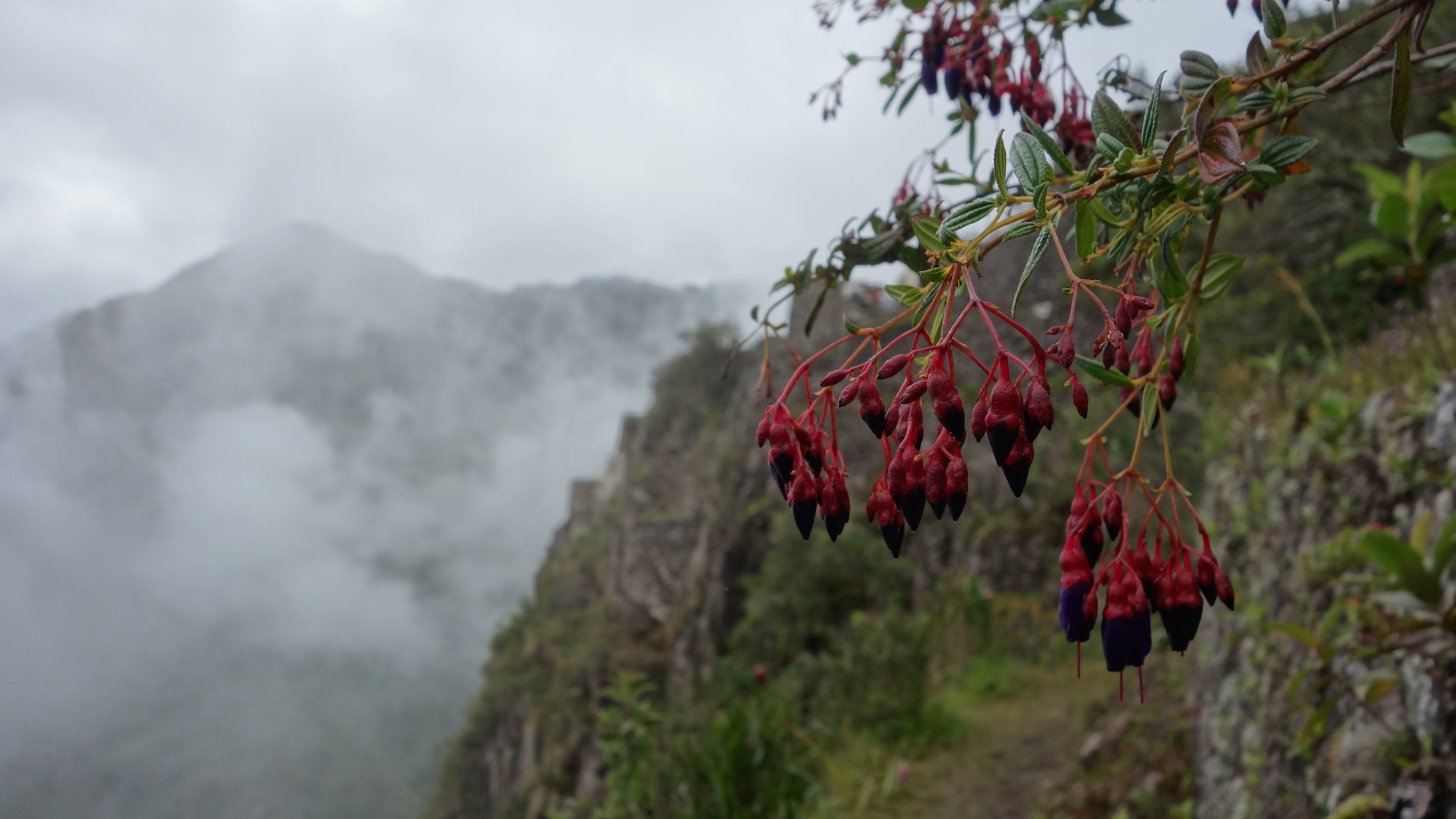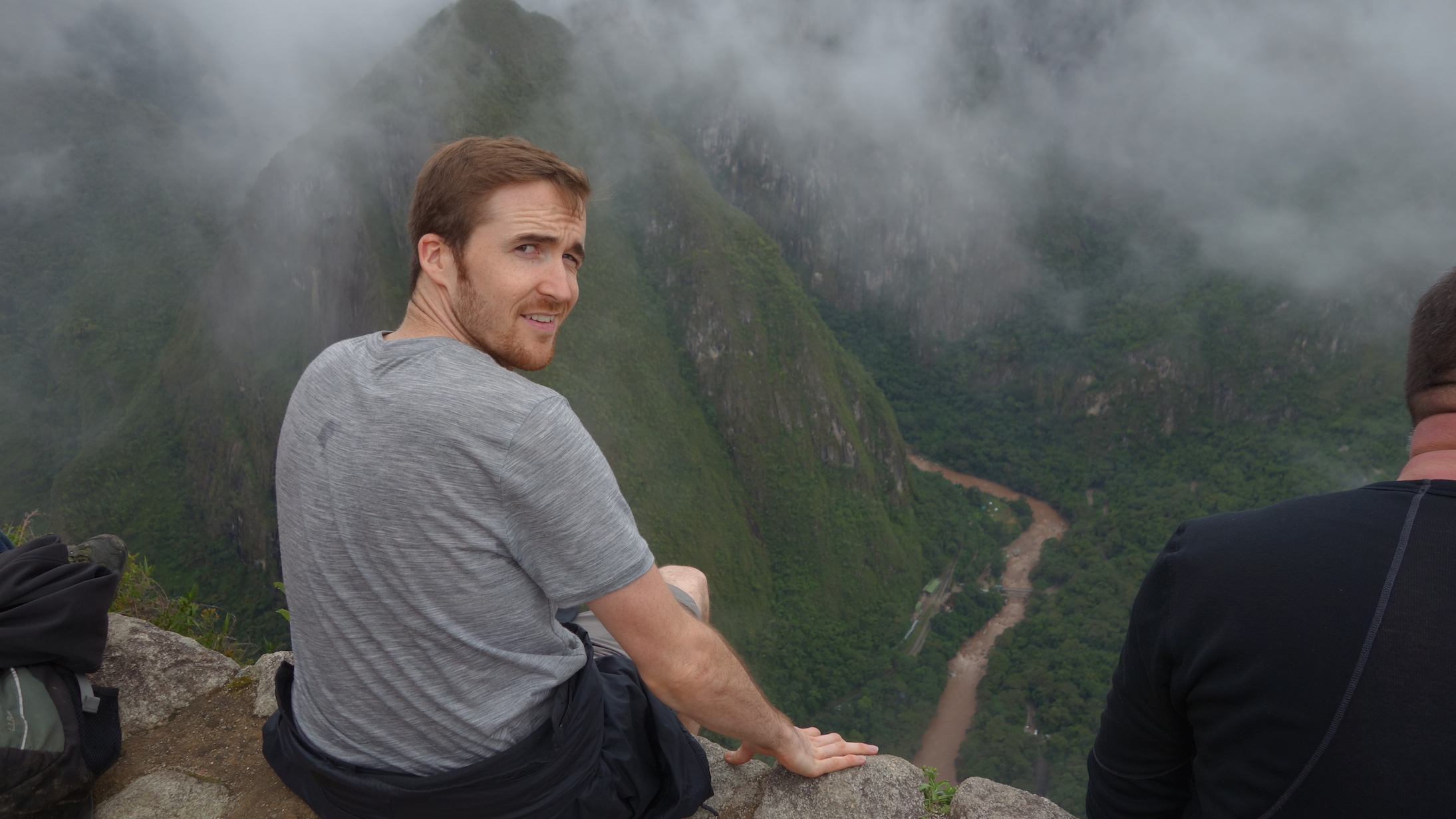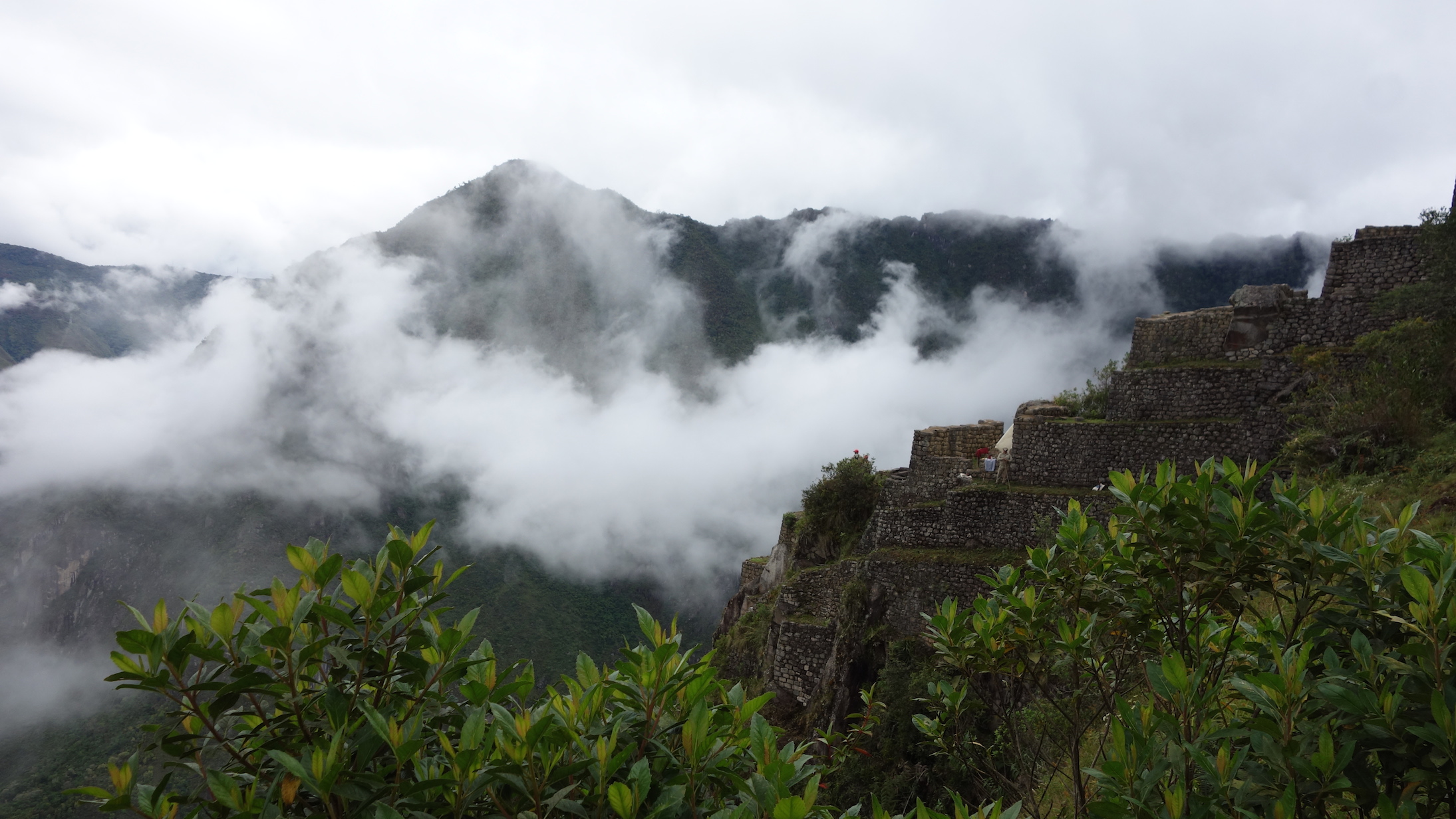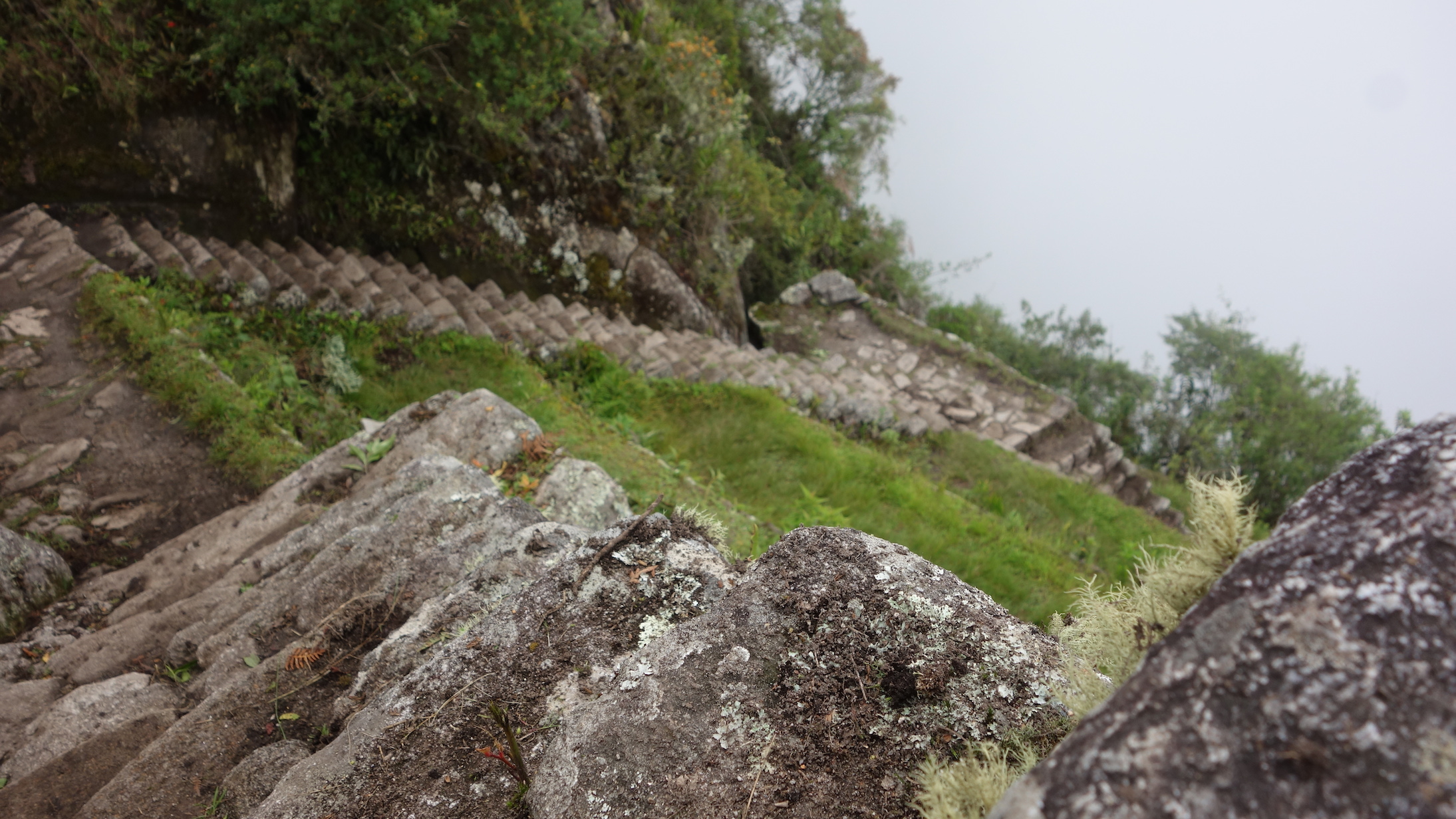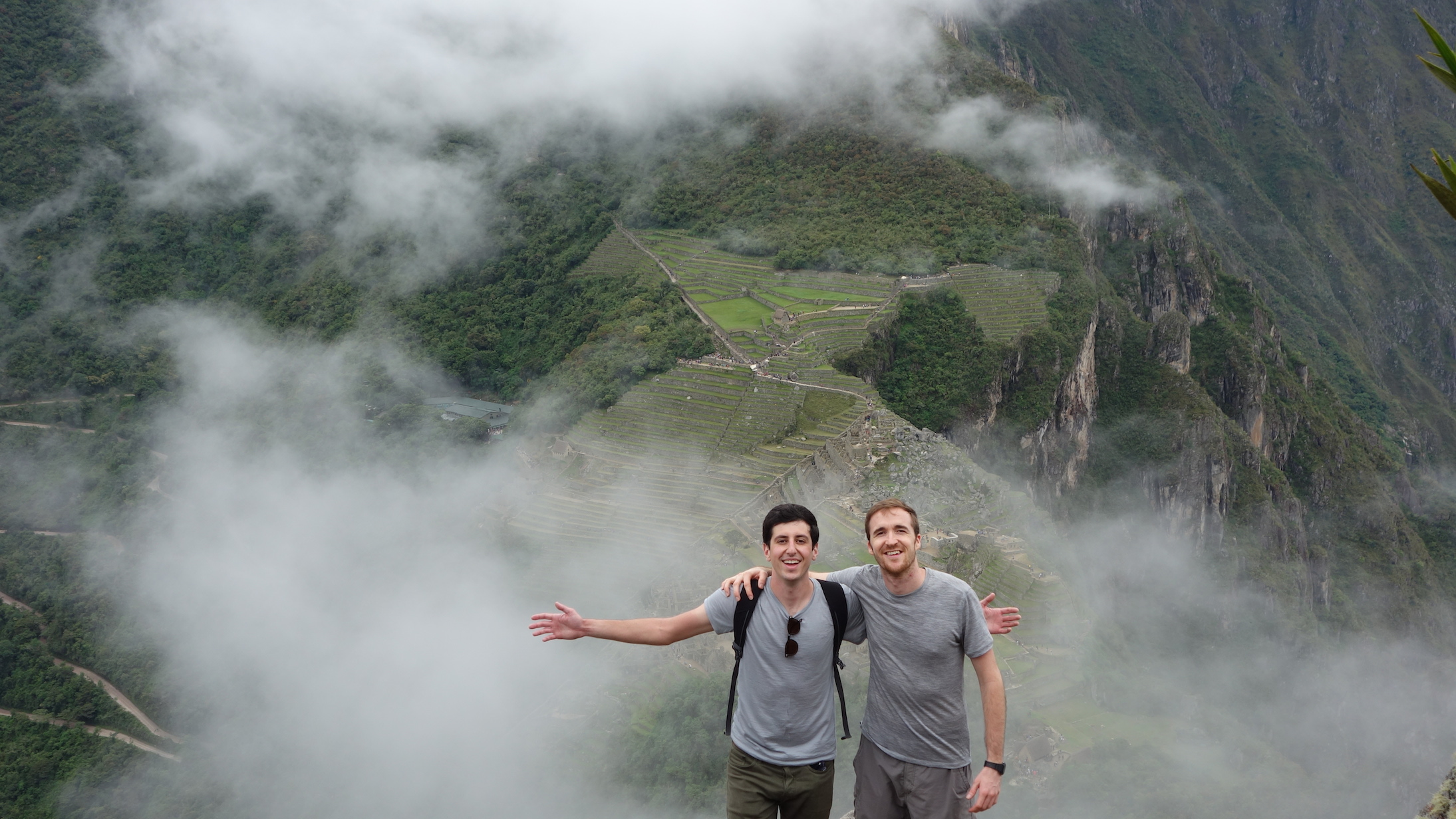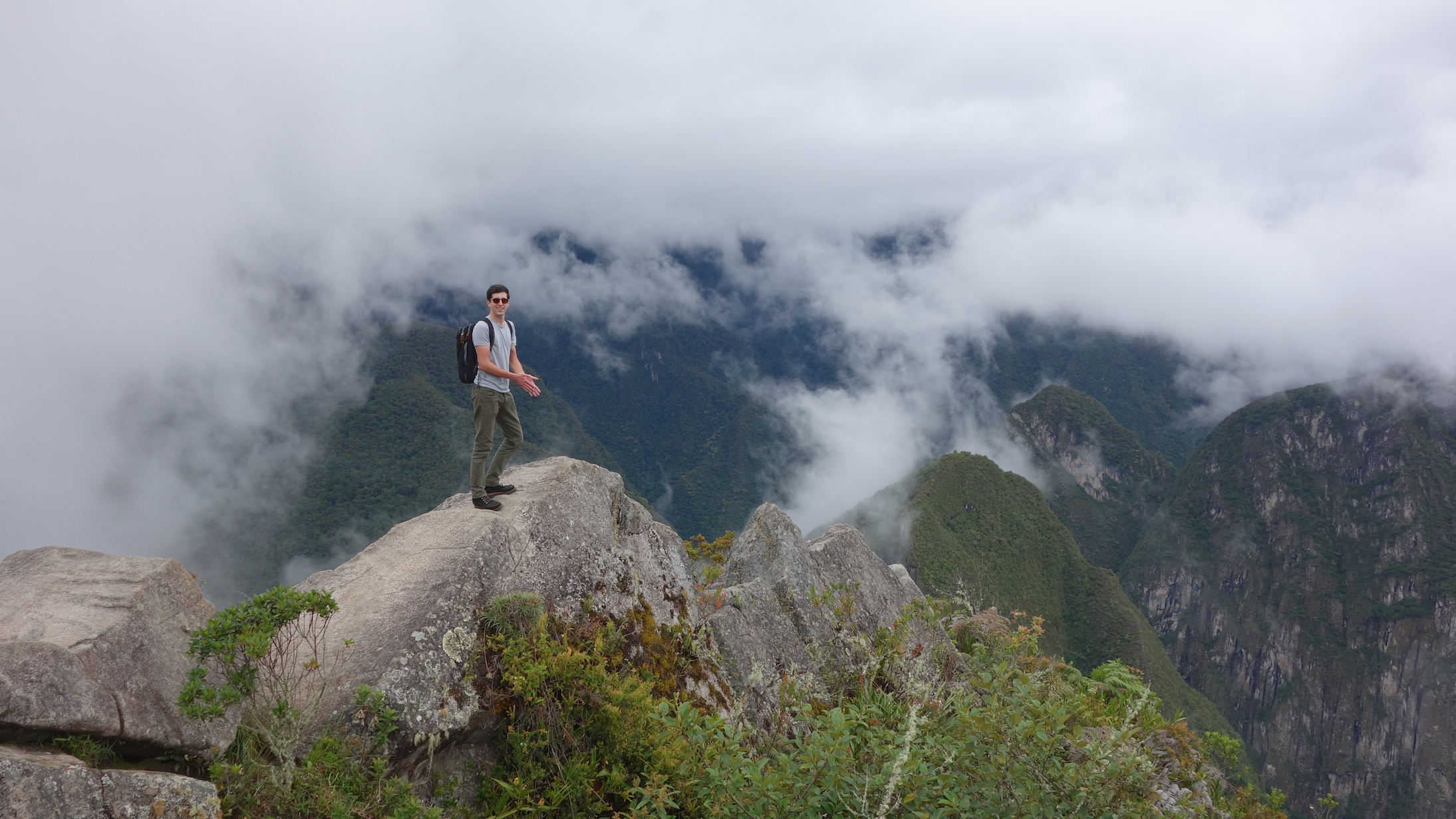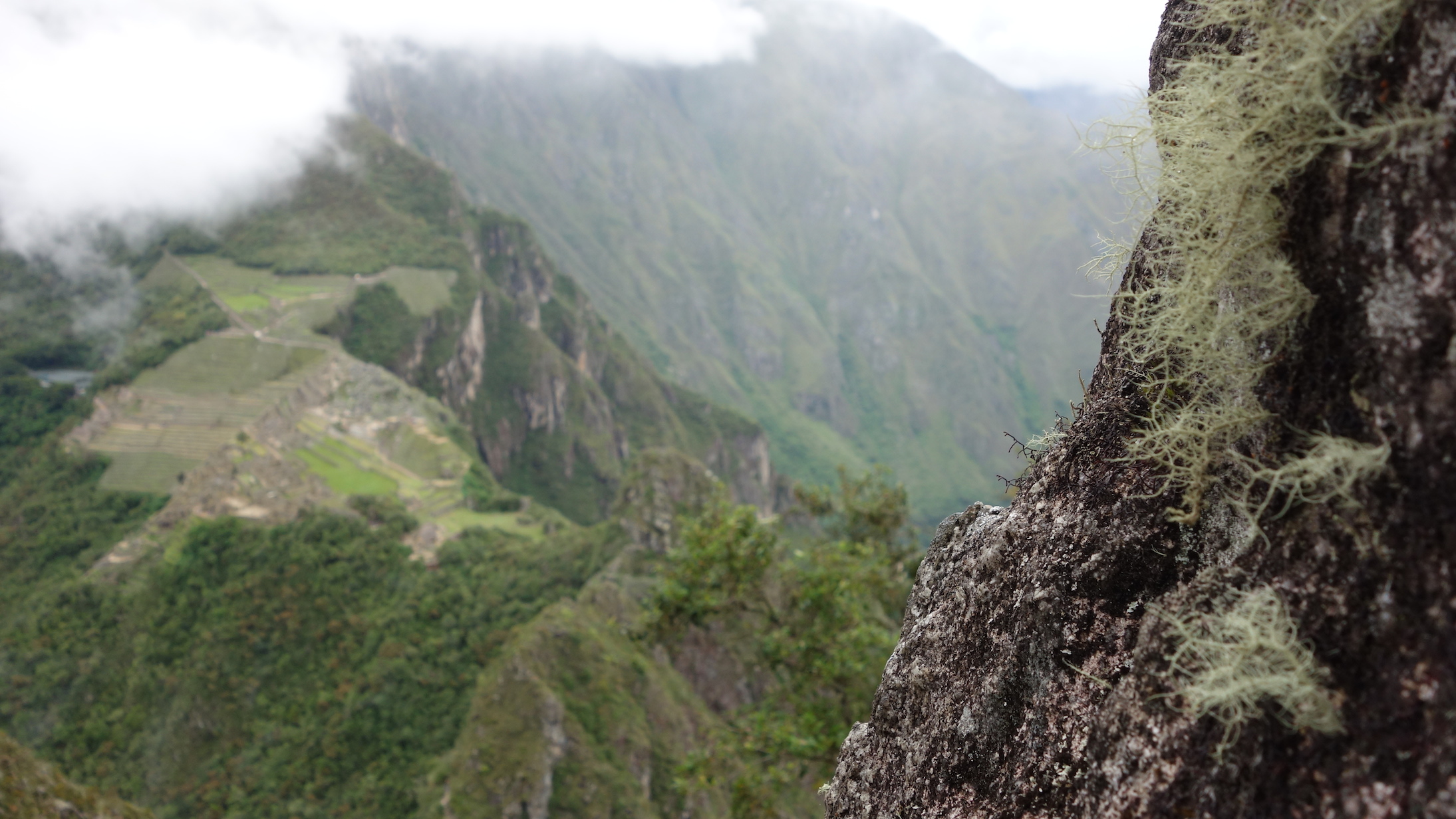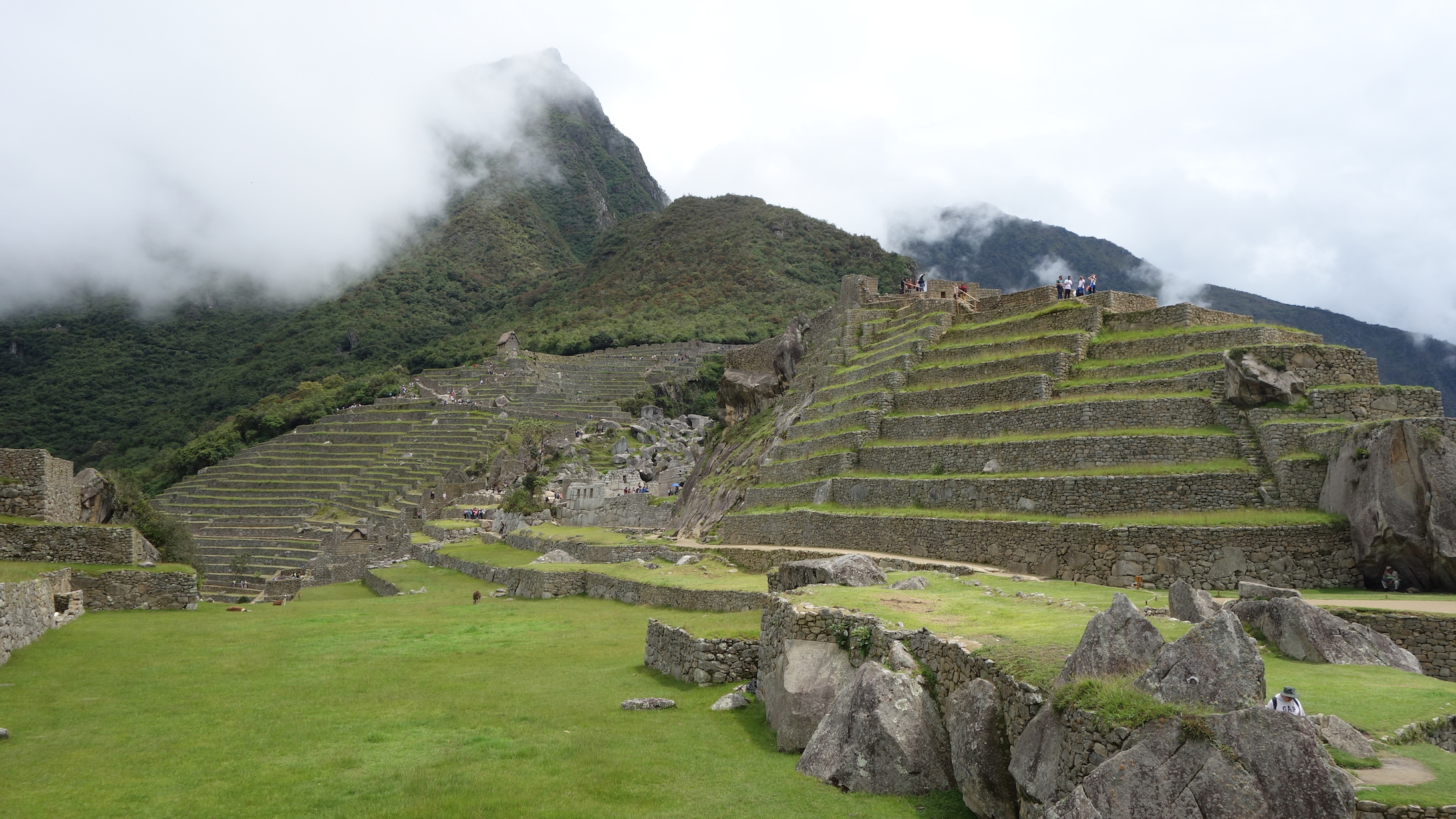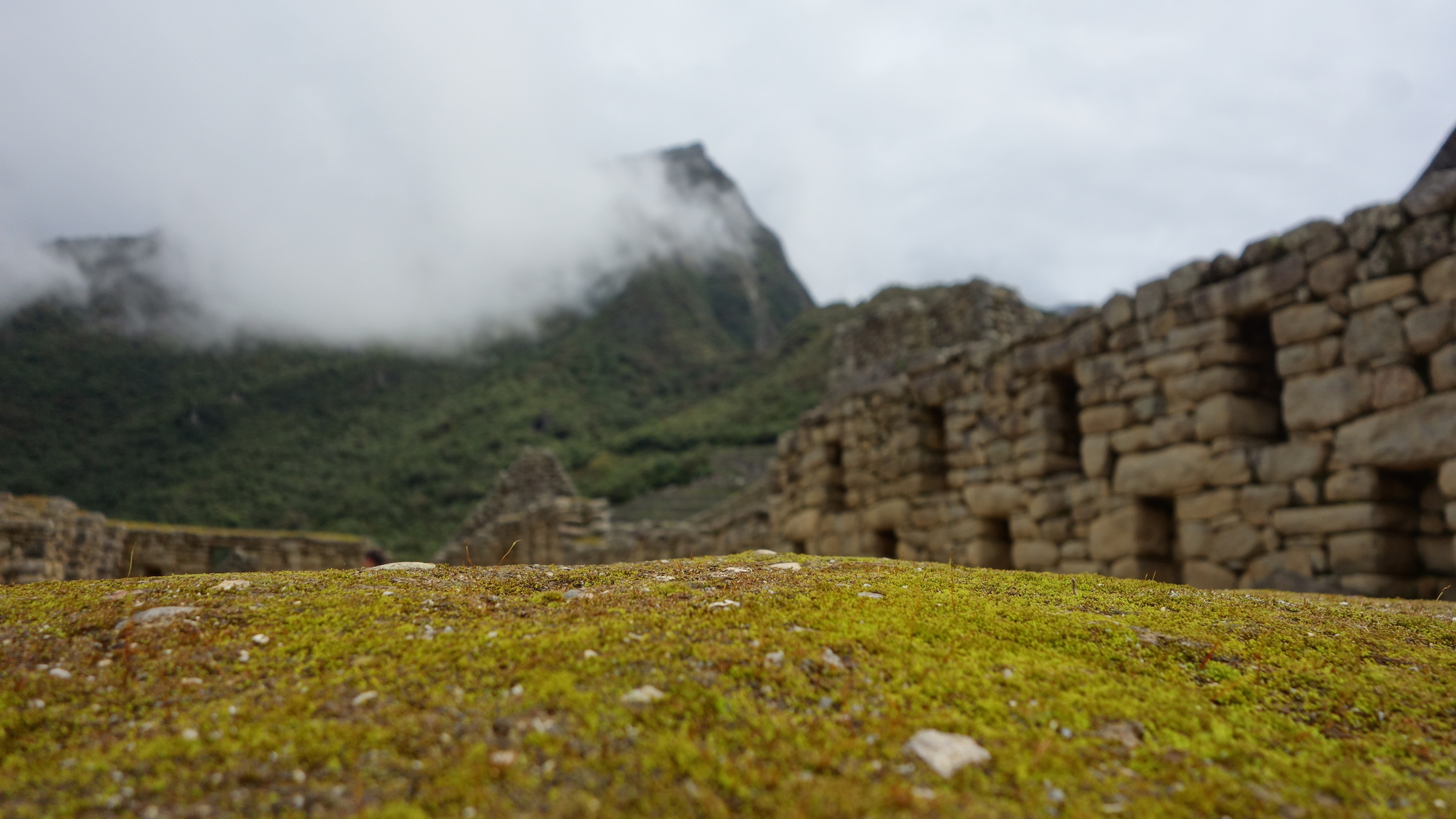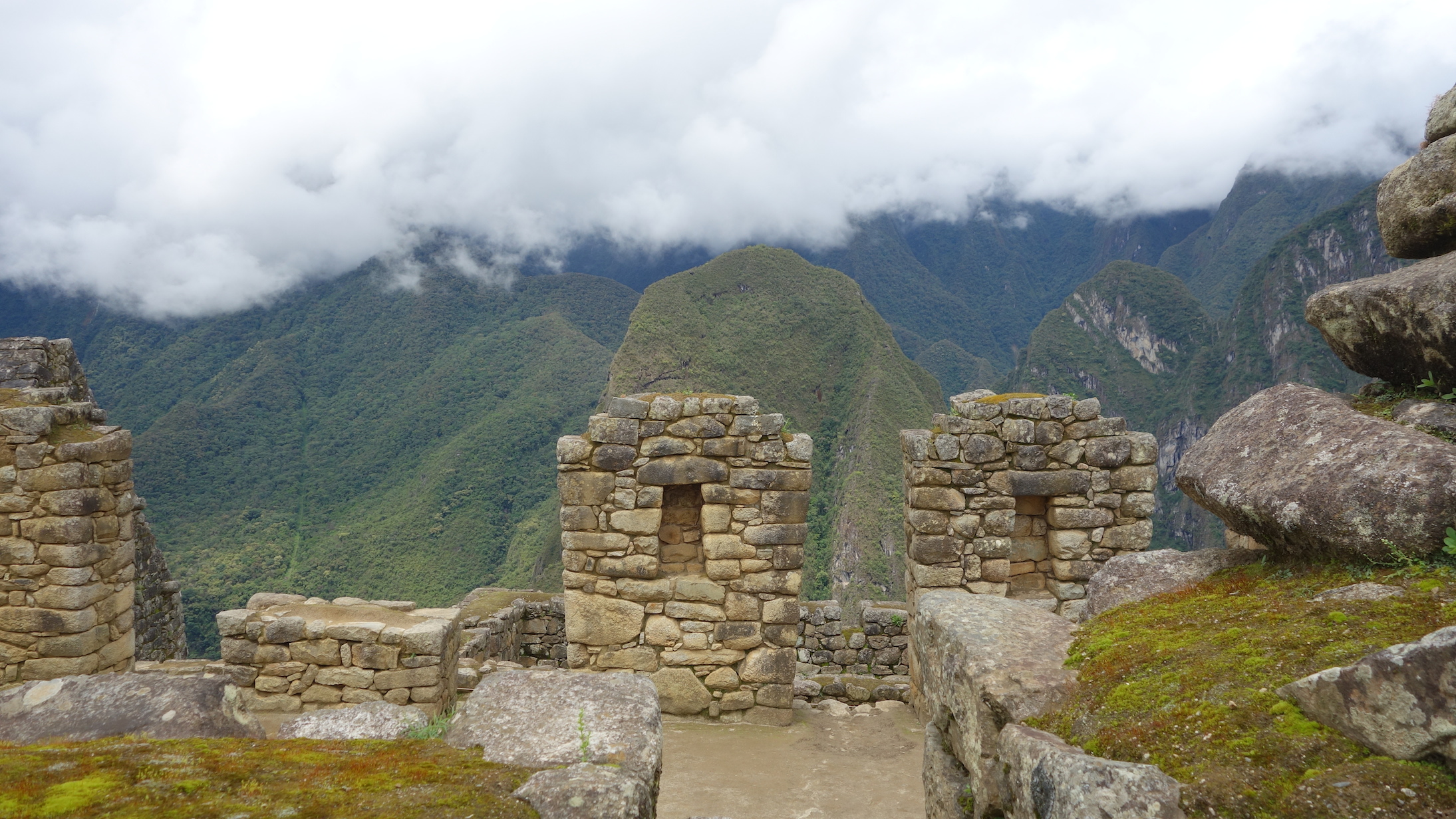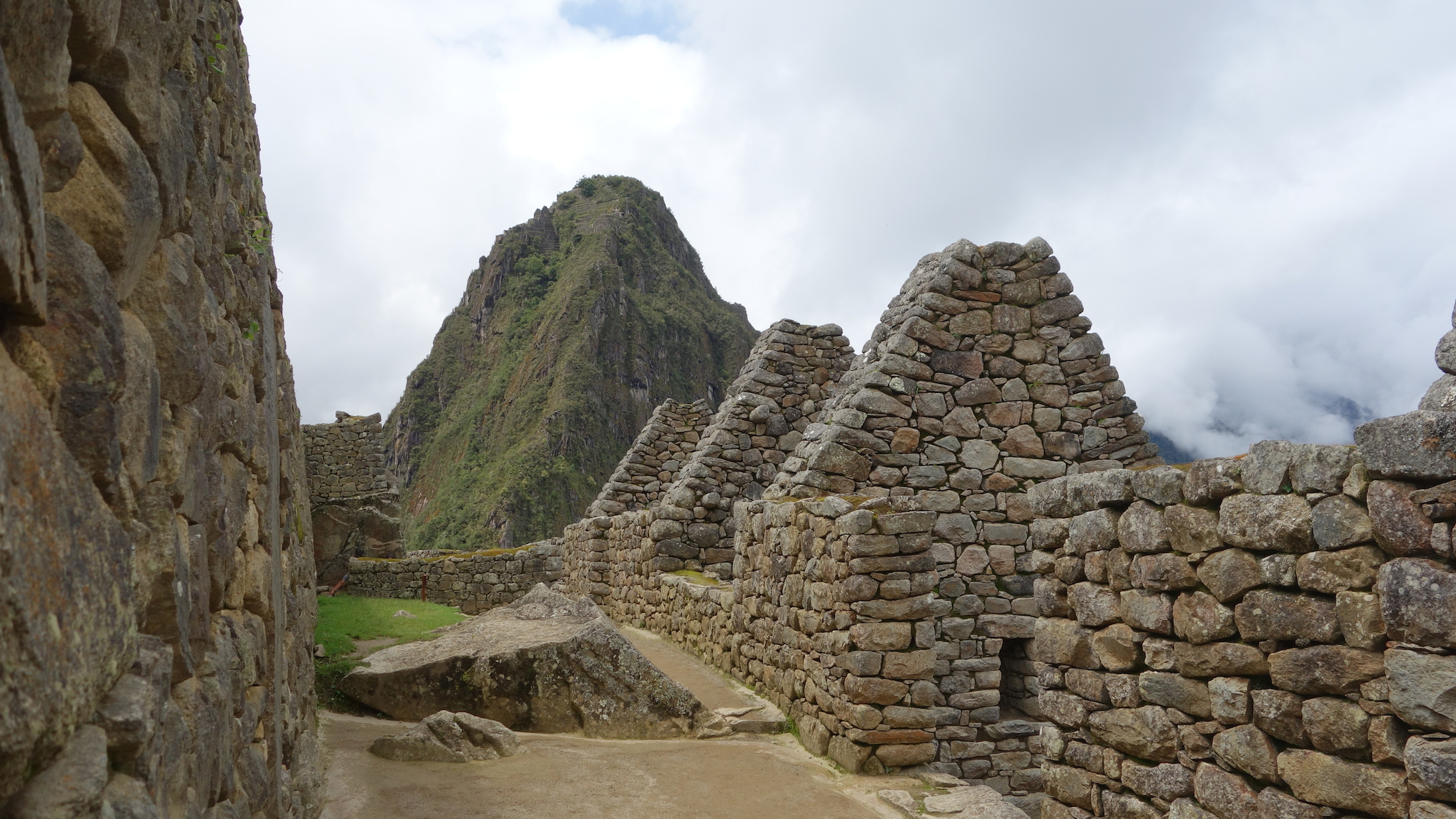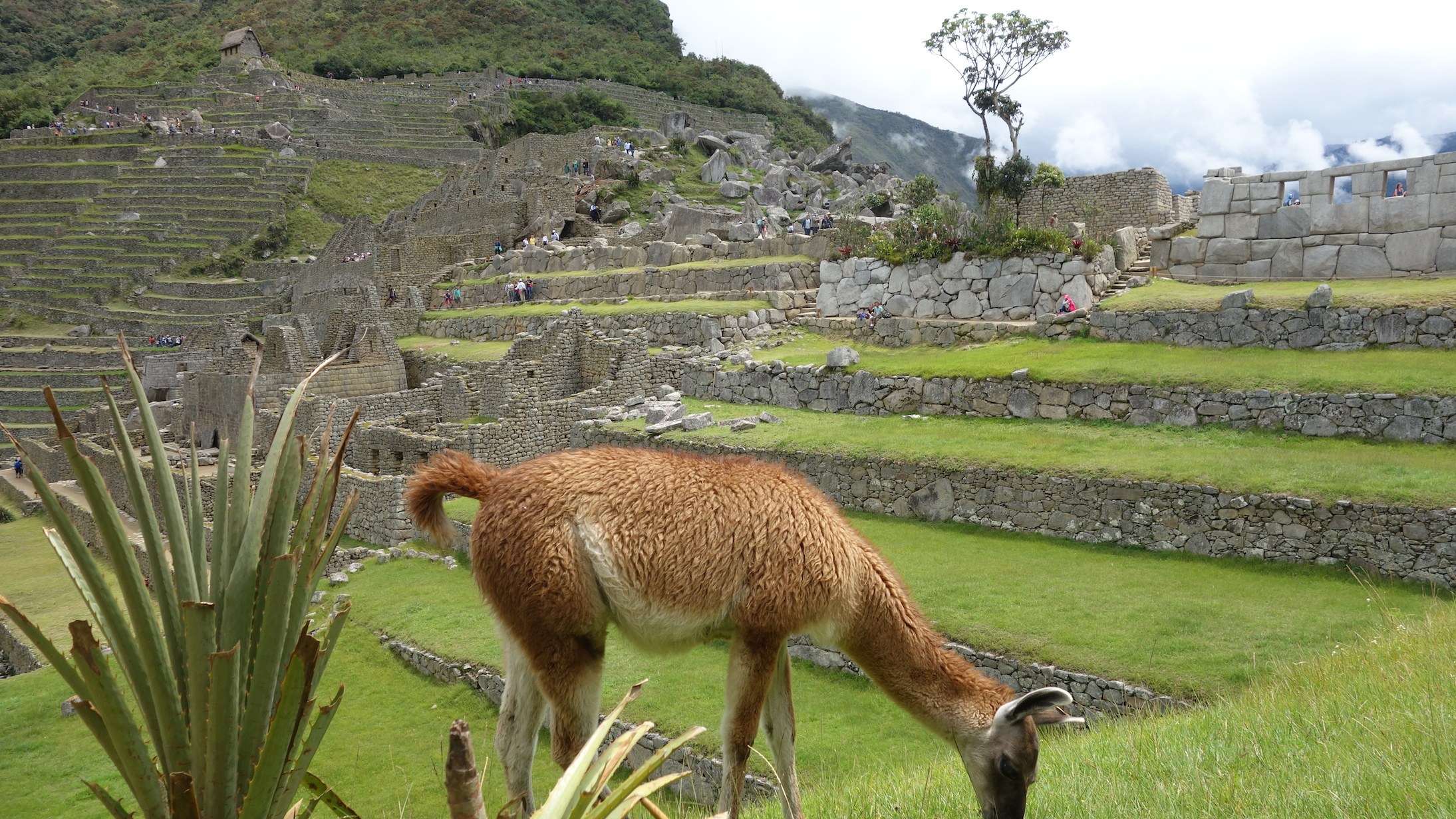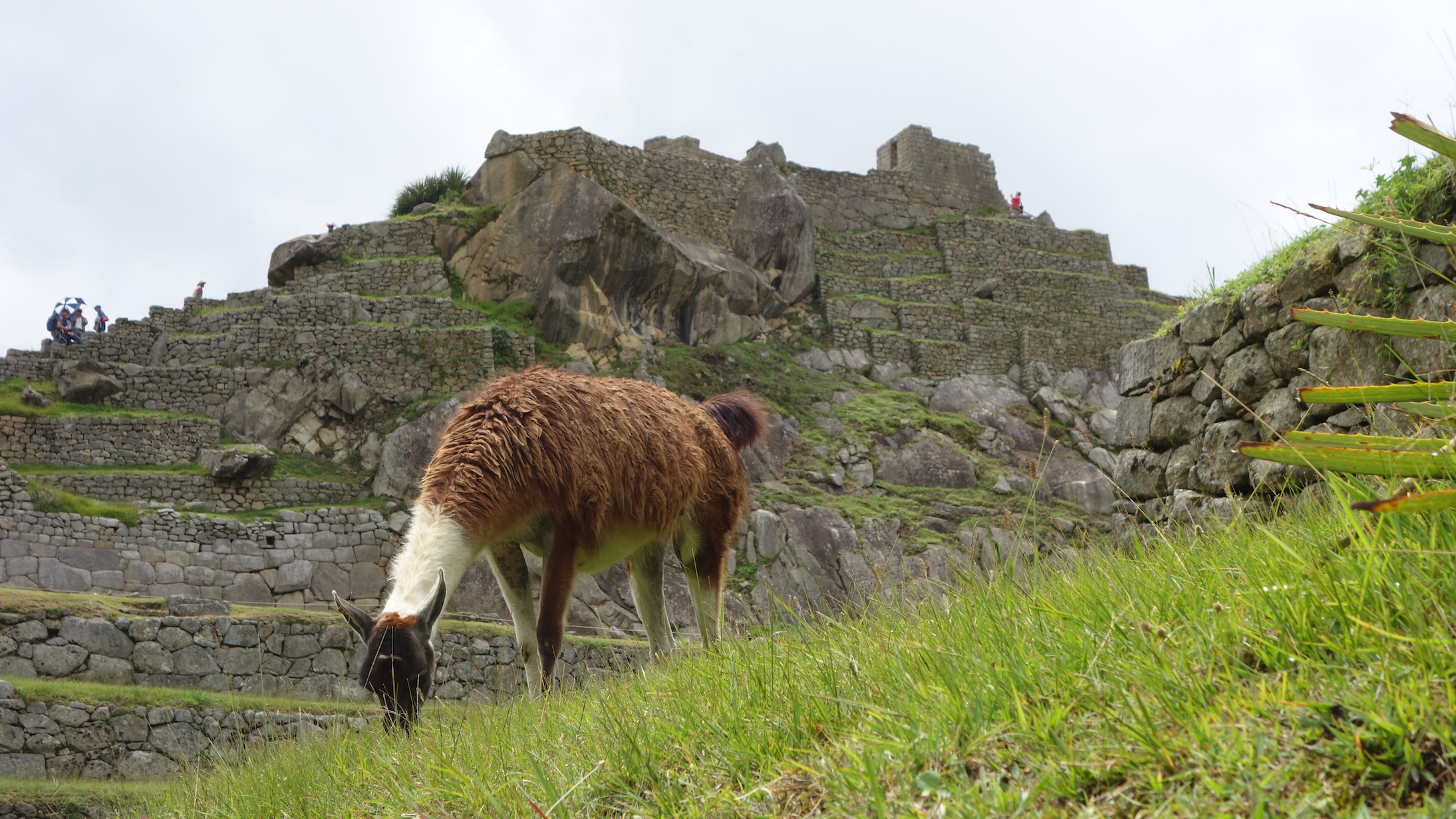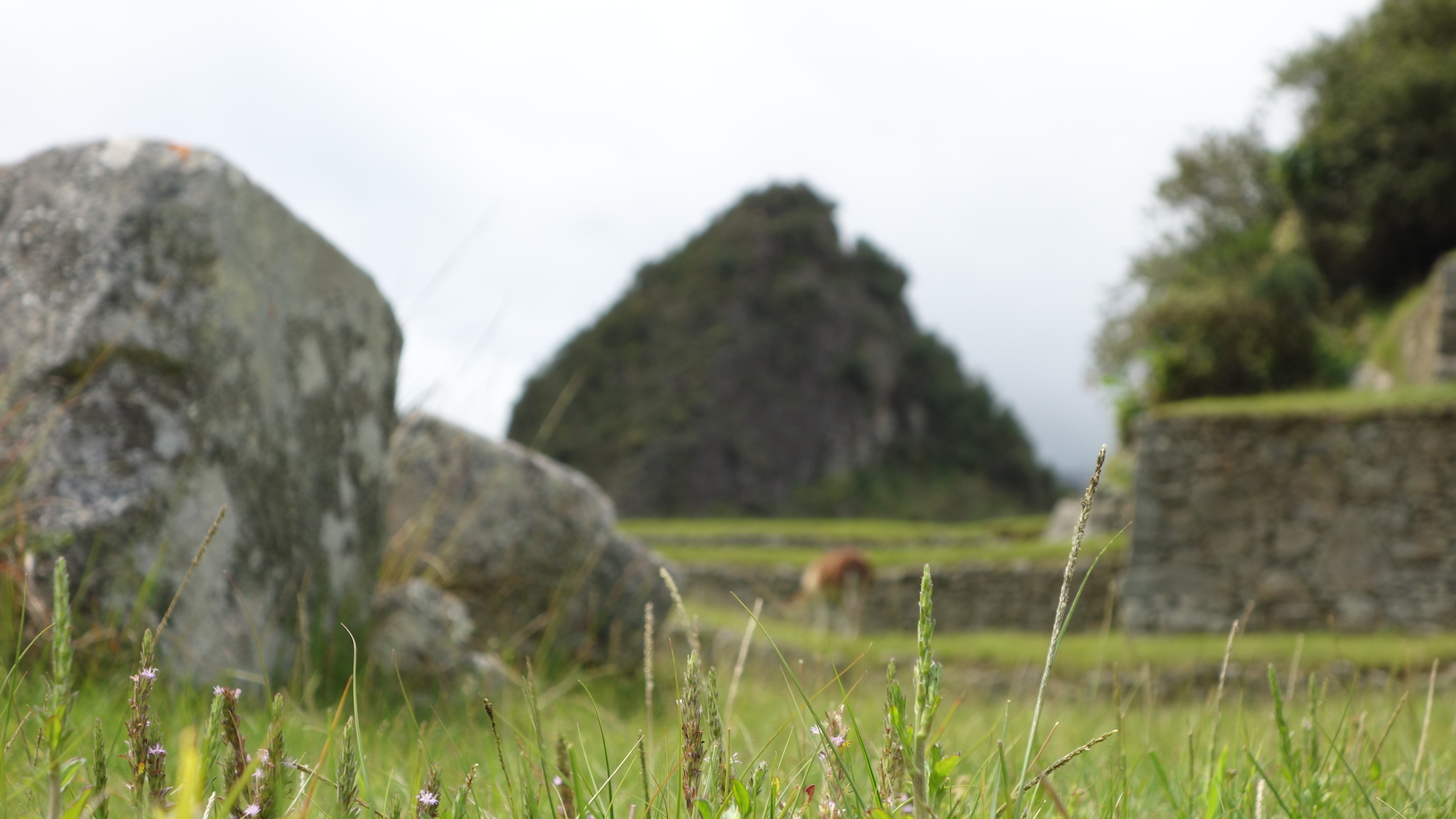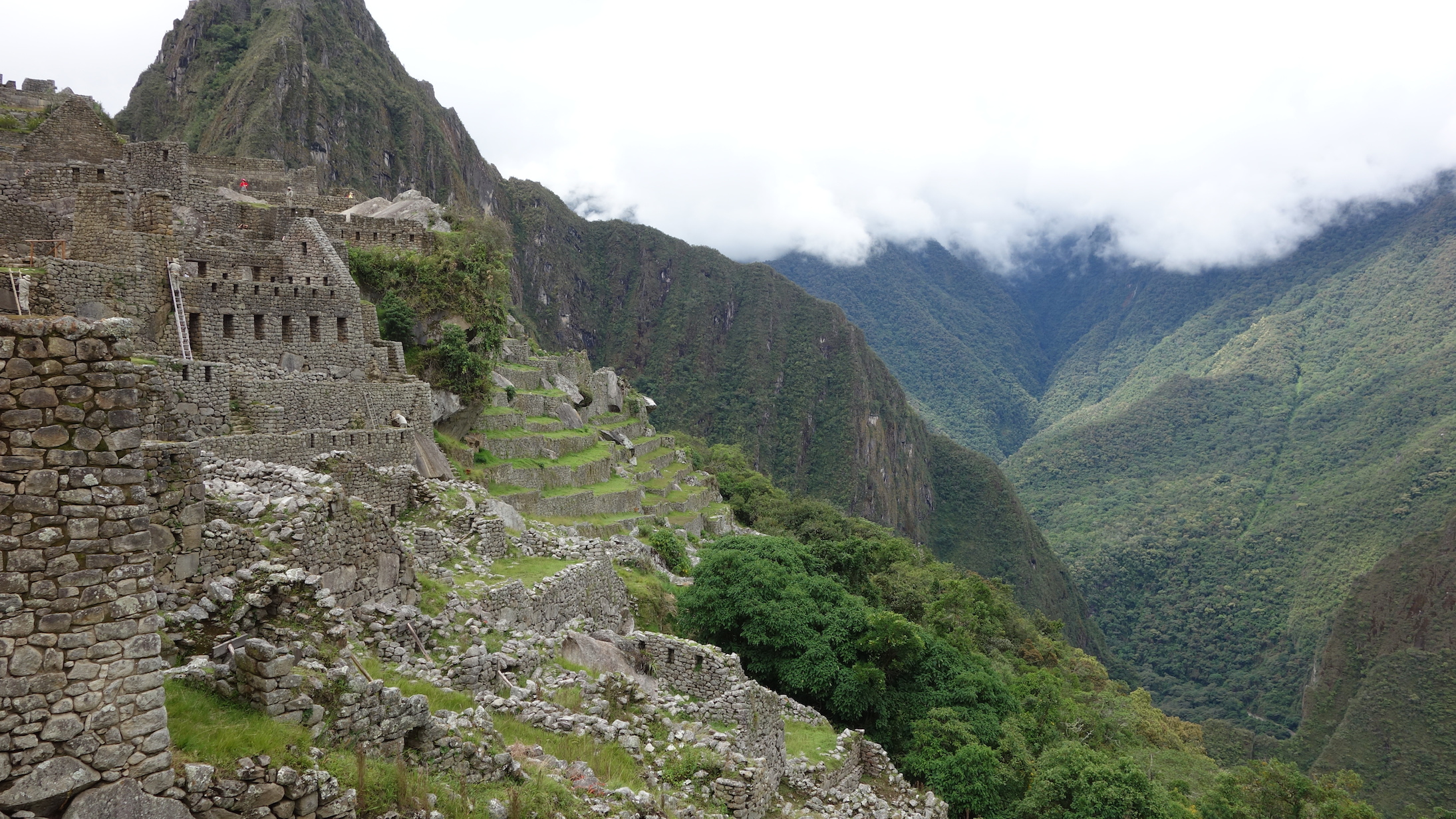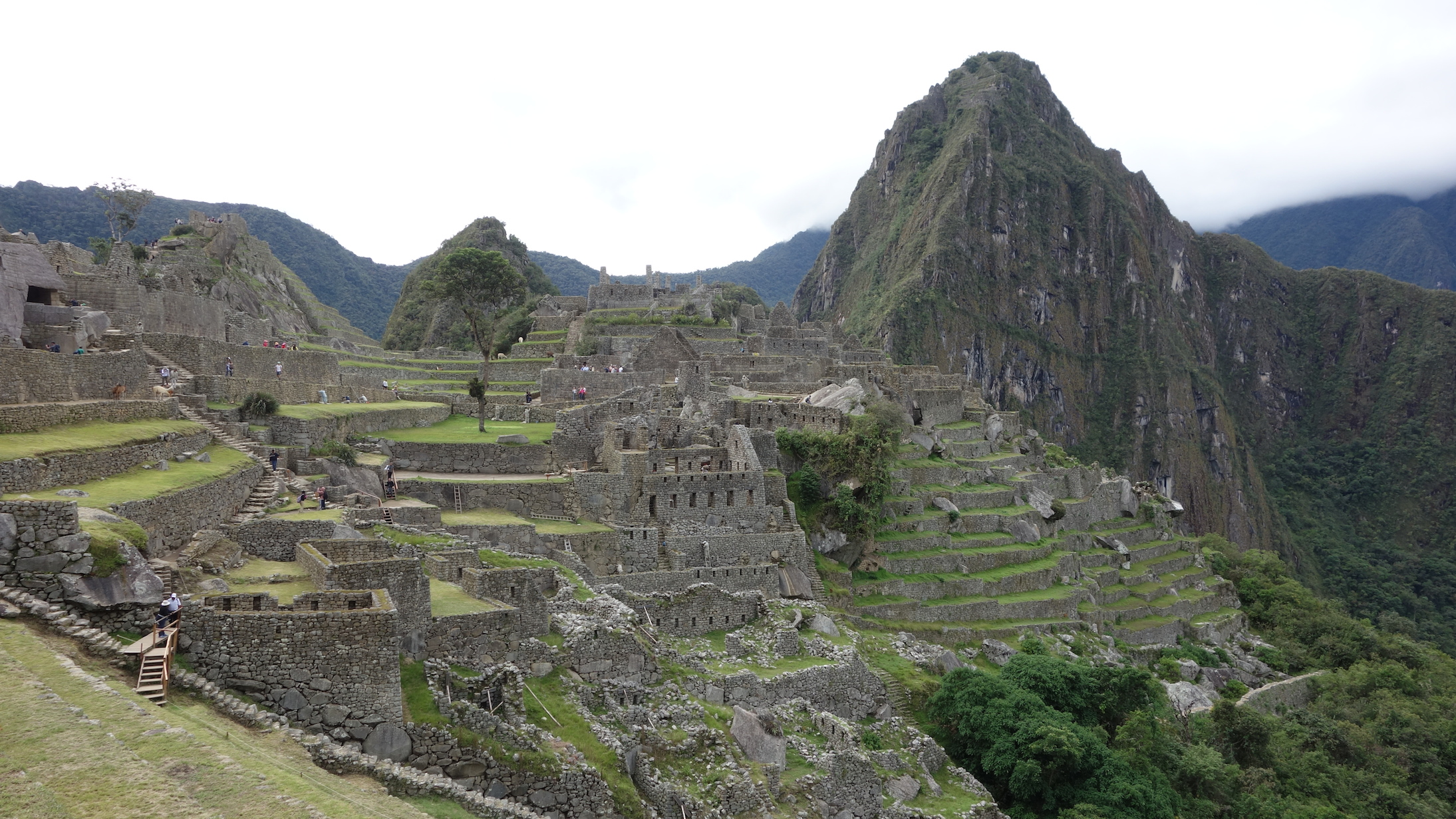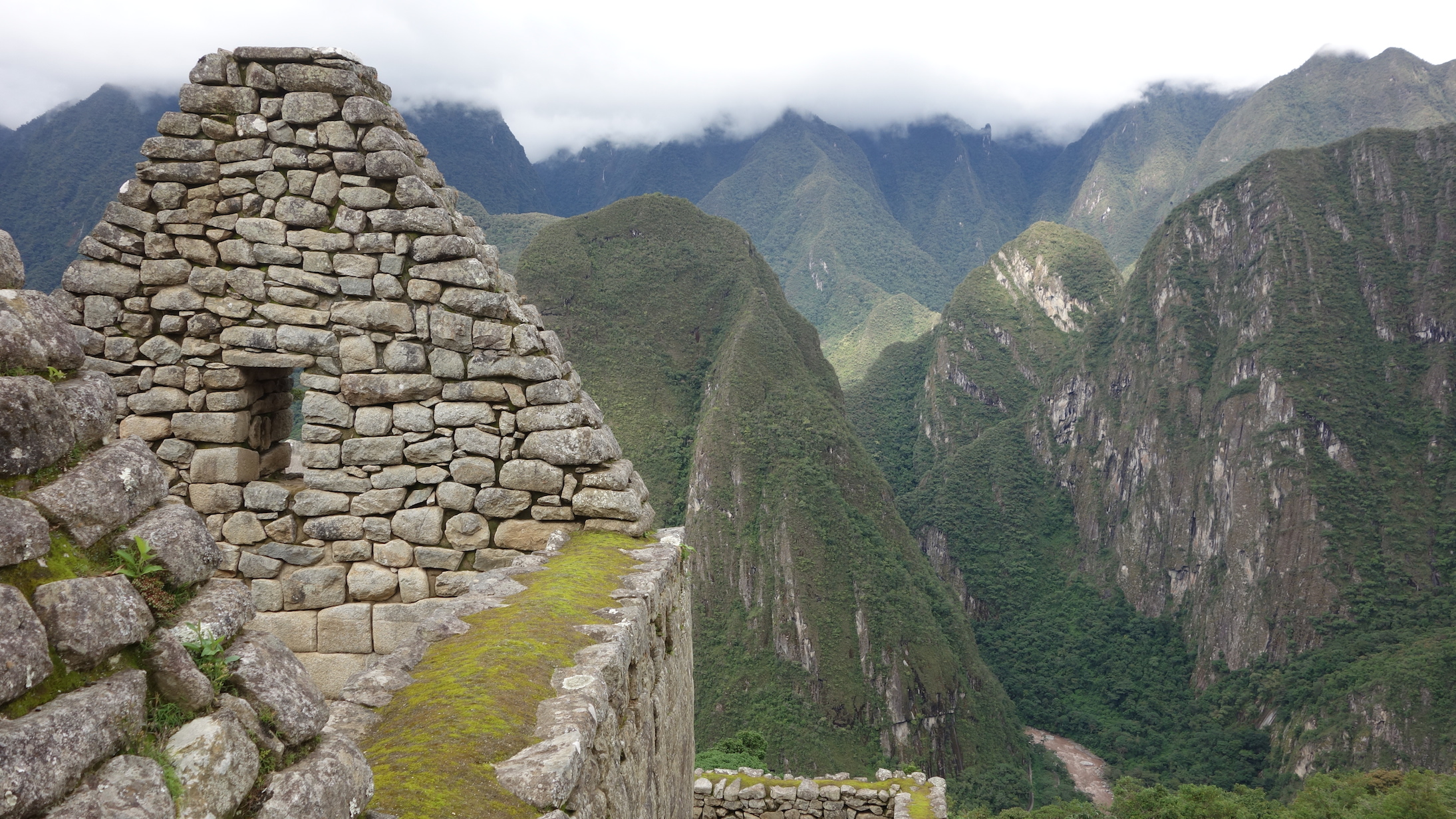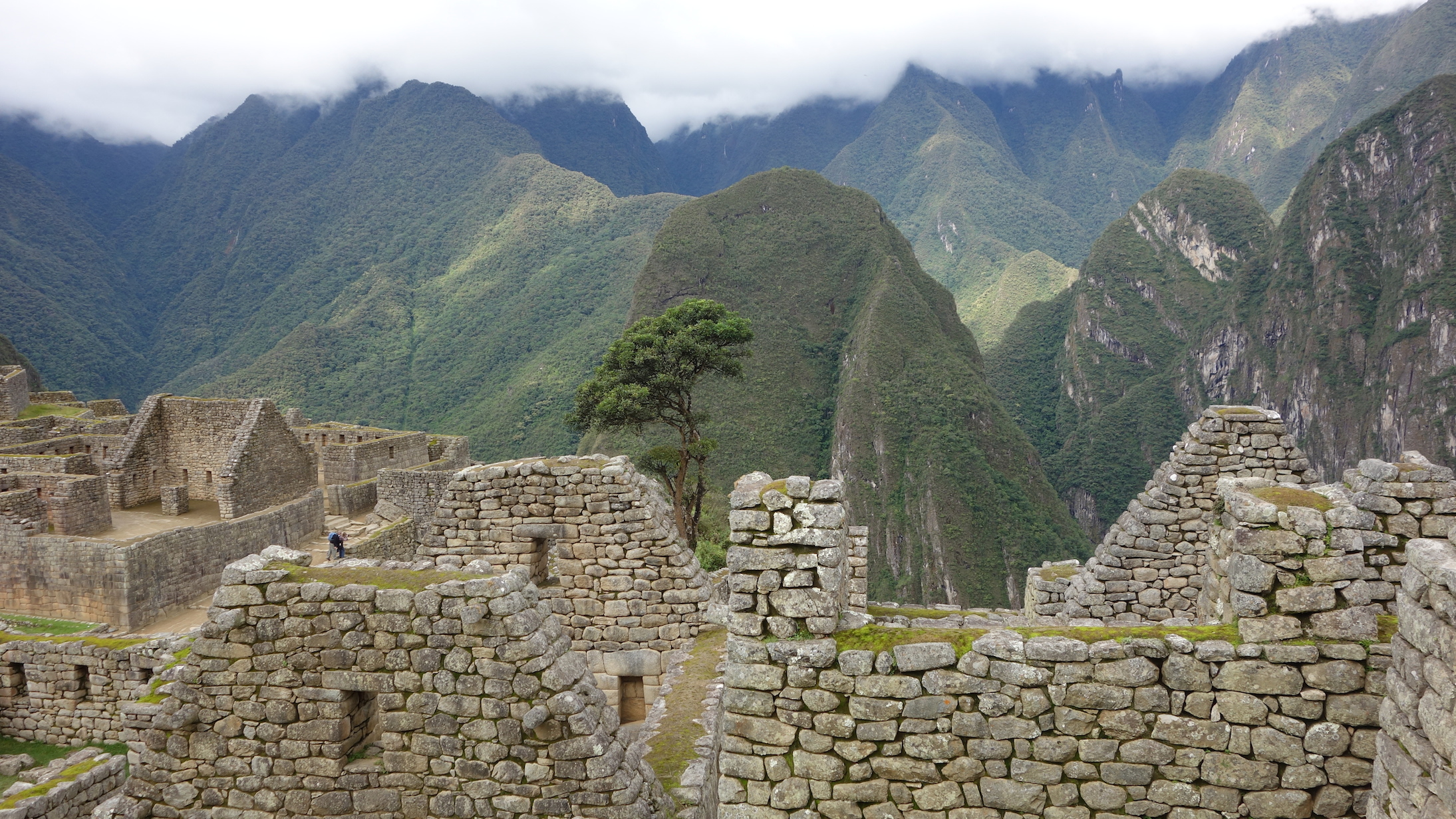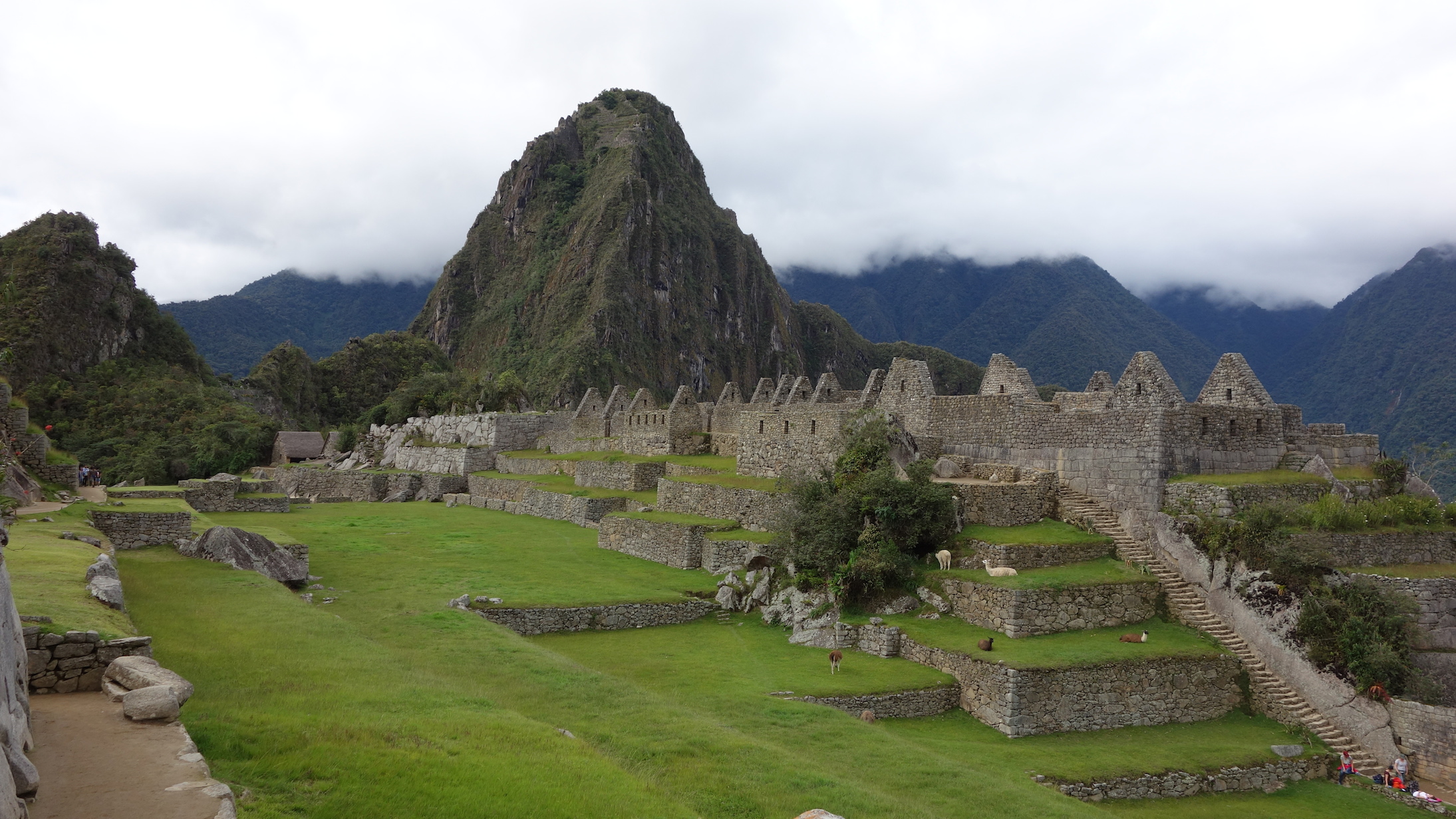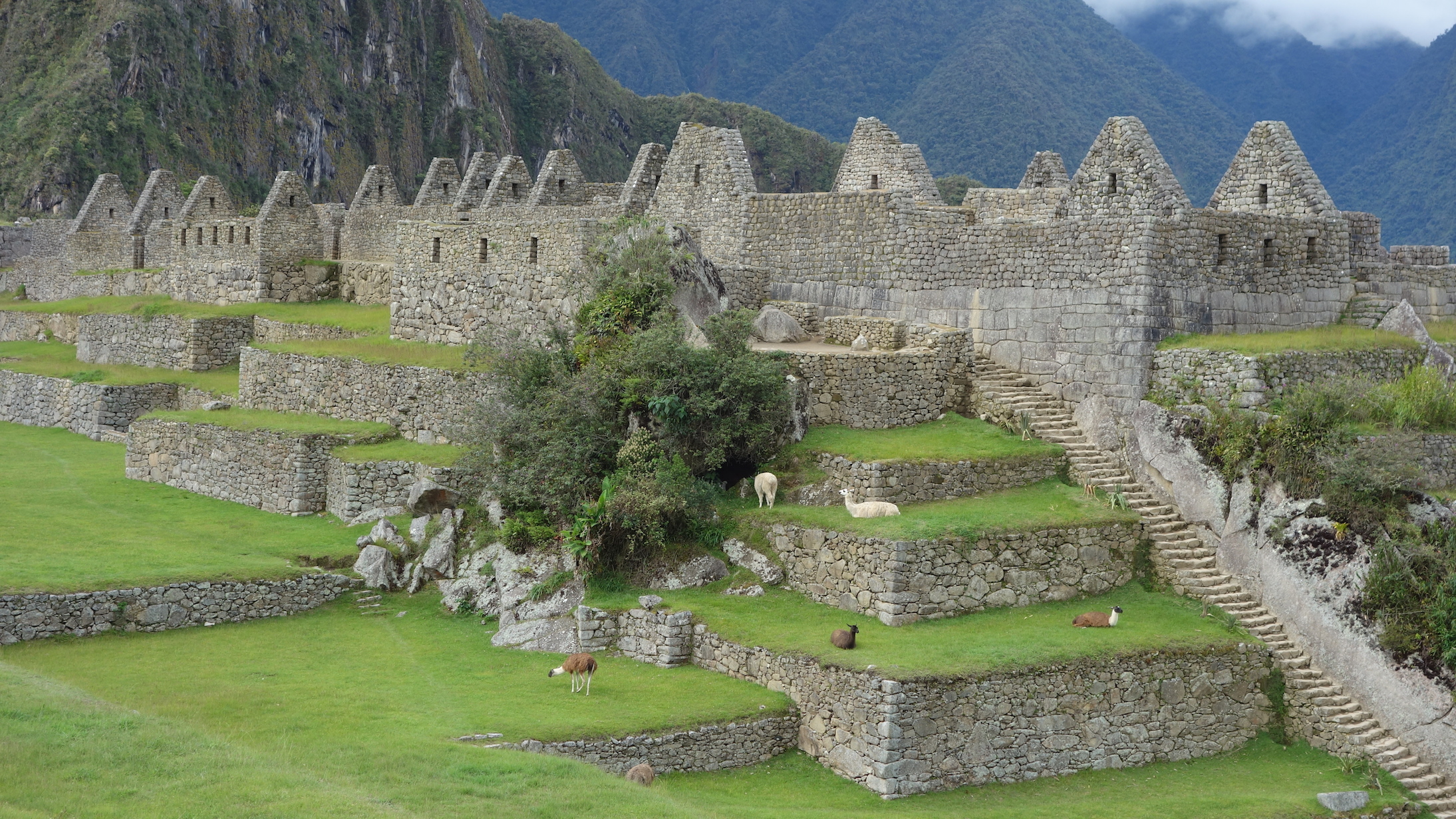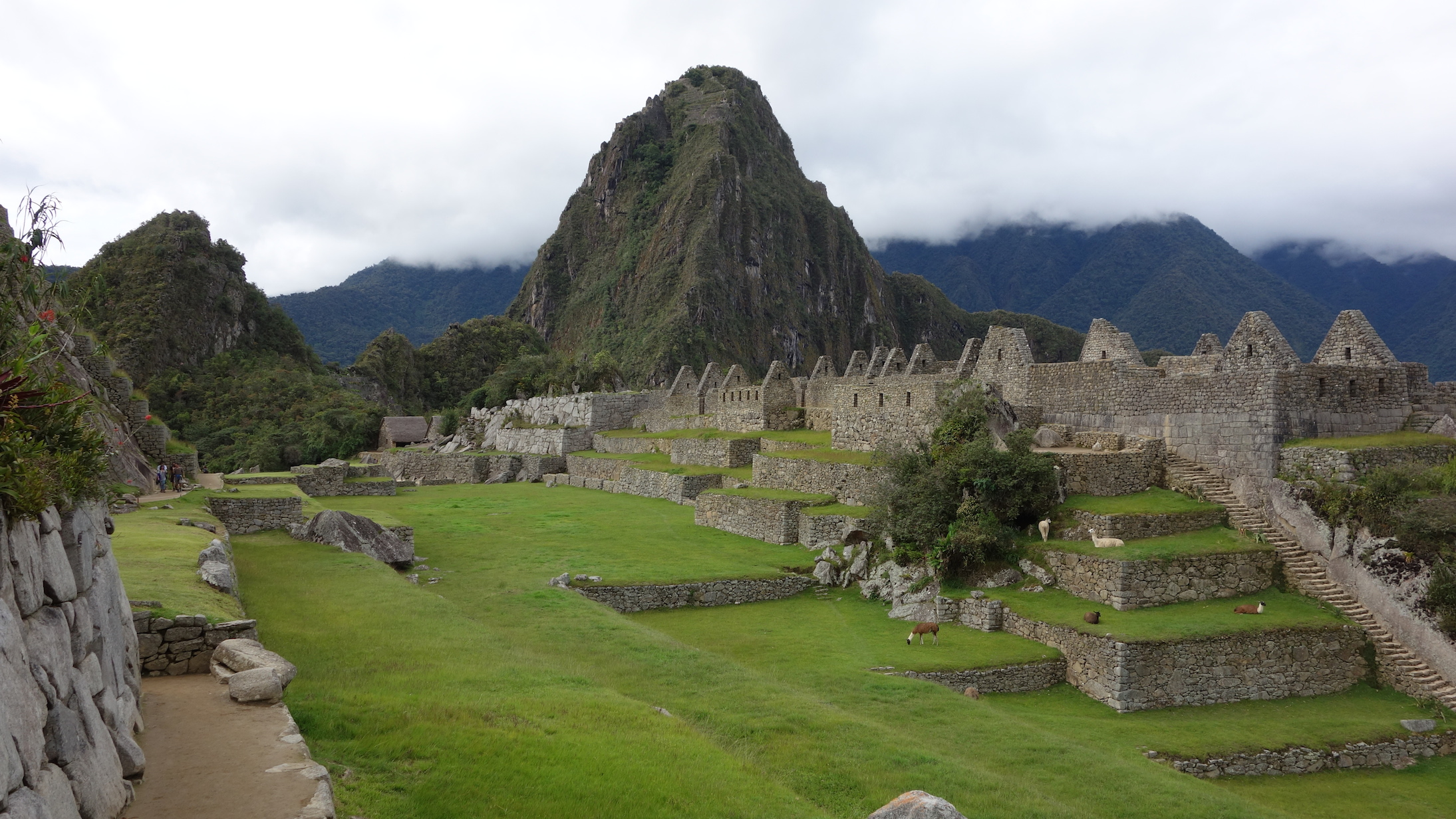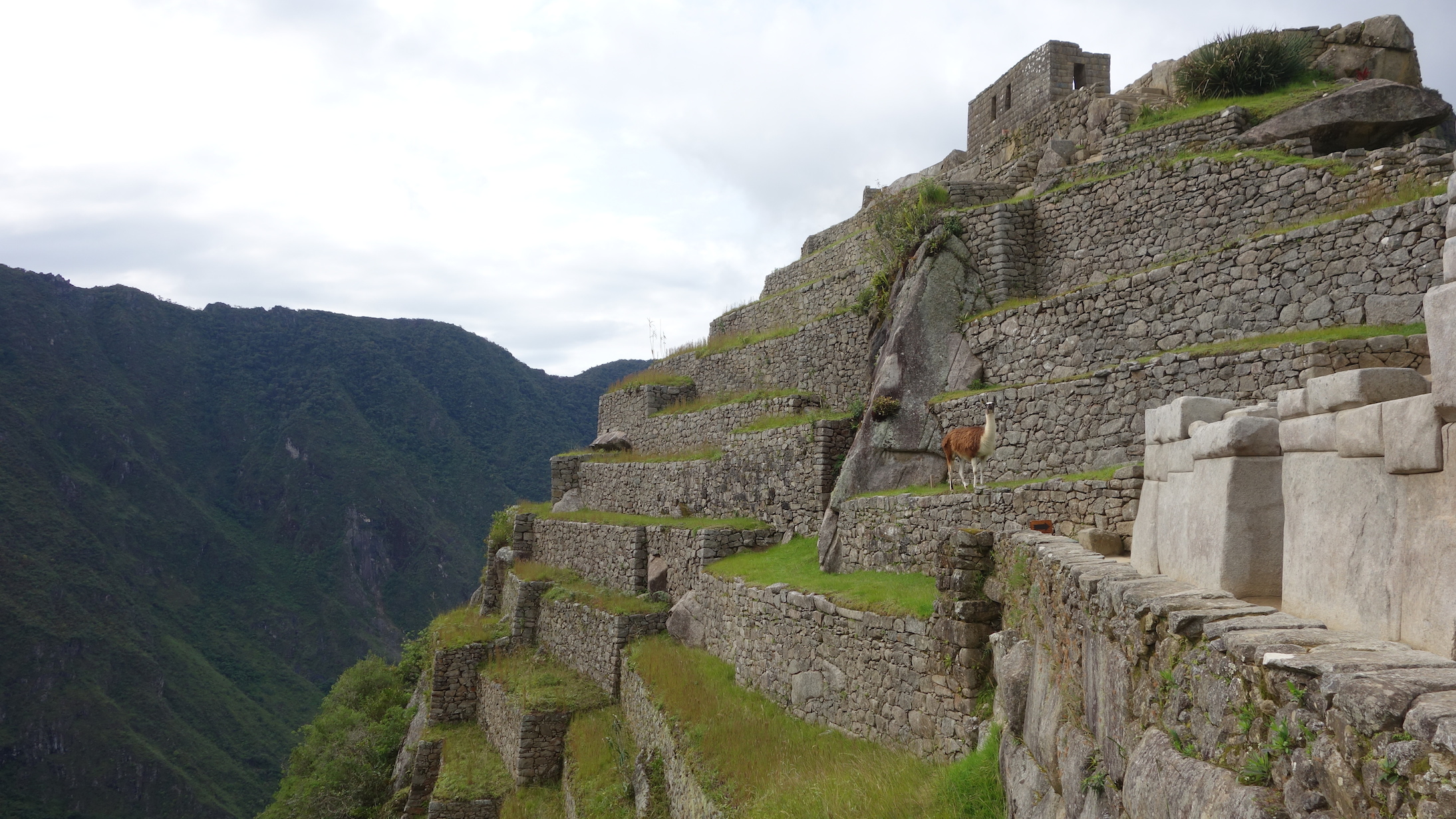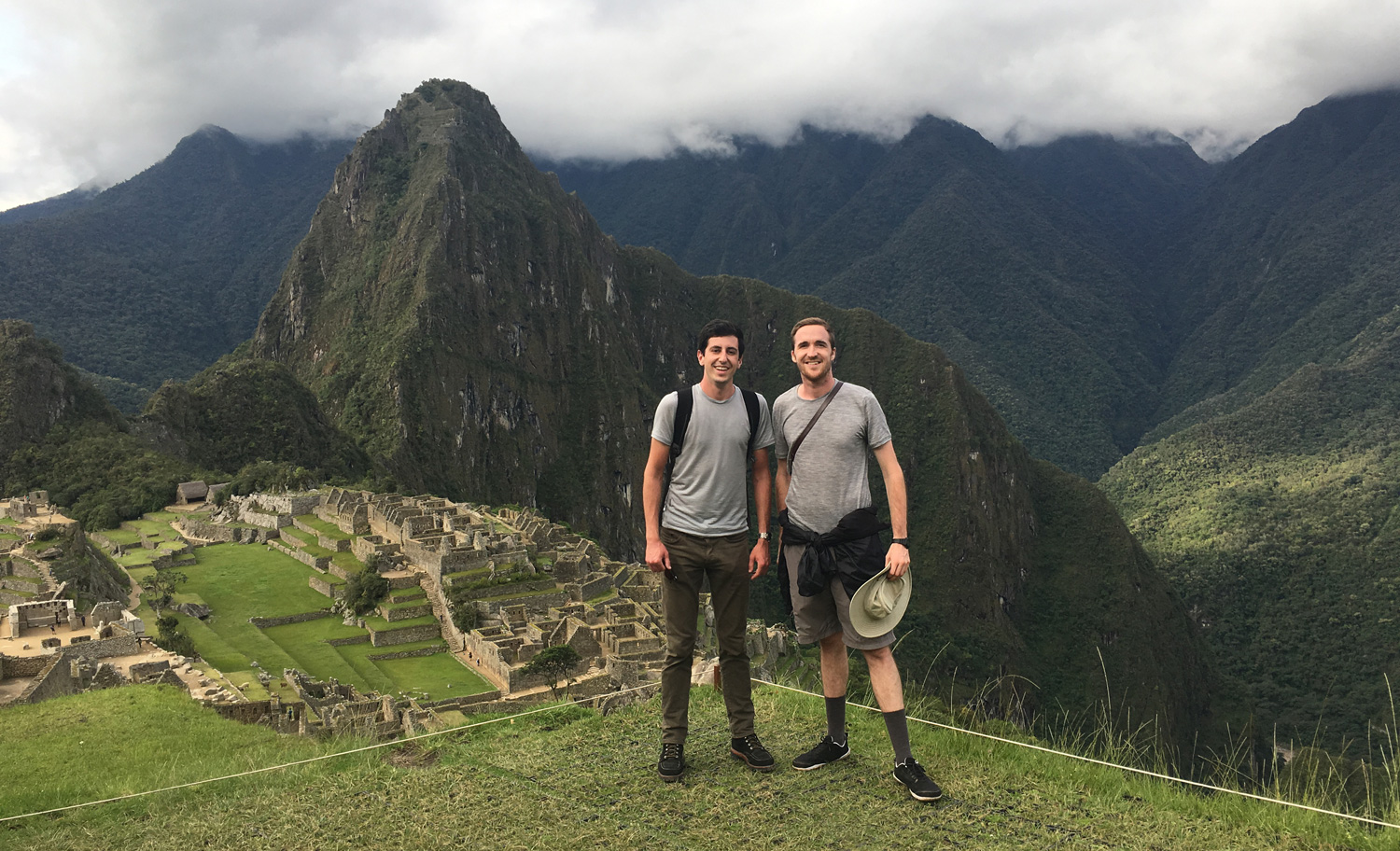Cusco is a really pretty town with an old European aesthetic. The Spanish Colonial architecture is both quaint and photogenic, while also a stark reminder of a grim history of the region. What’s worse is that the town seems to be entirely driven by tourism. This is both annoying – being asked to buy something or eat somewhere every 5 steps – and also depressing – thinking about the economic trajectories of many post-colonial communities. There’s that uncomfortable reality of traveling again: I’m no stranger to tourism-driven communities, so what does that make me?
We took an absurdly early and long taxi ride to Pachar train station because the usual station is under construction. The station was gorgeous though.
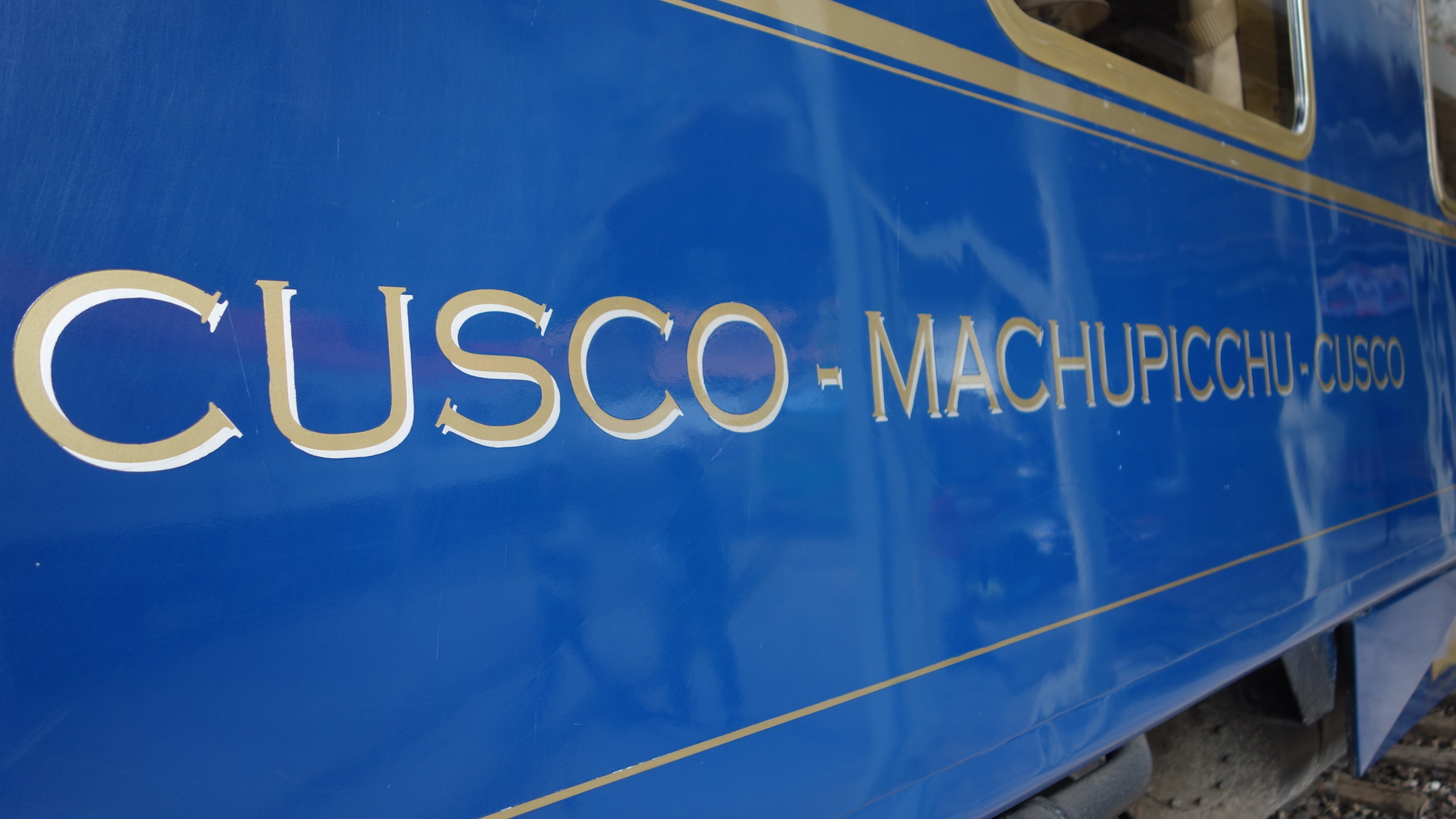
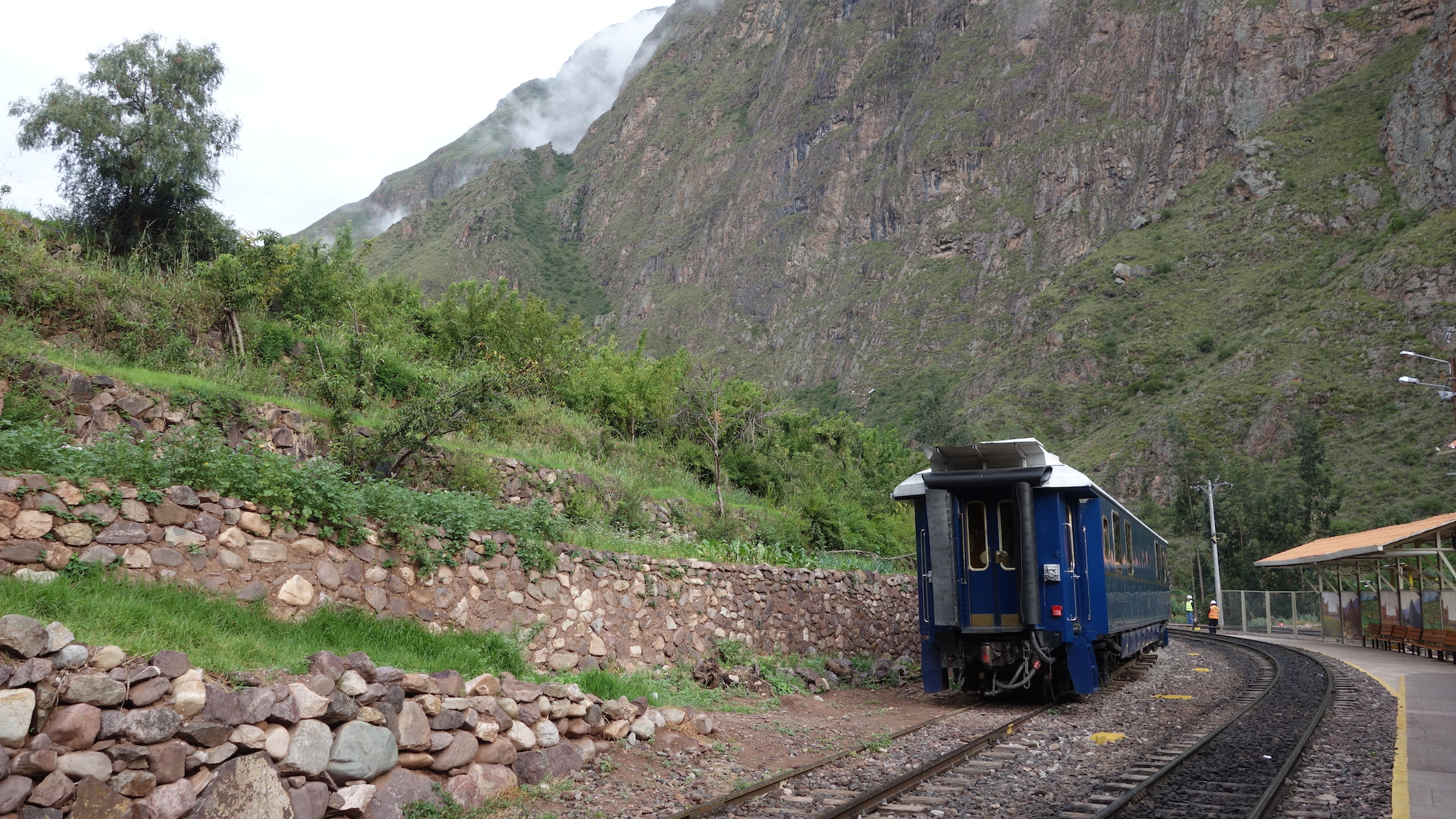
From Pachar we were on a train with a glass roof that took us through the Sacred Valley to Aguas Calientes. The train ride felt like a couple hours on a tour through Jurassic Park. There were no dinosaurs, but there was epic Peruvian pan flute music, stunning green mountains and gushing rivers, and dudes selling awesome cargo vests. What more could one ask for?
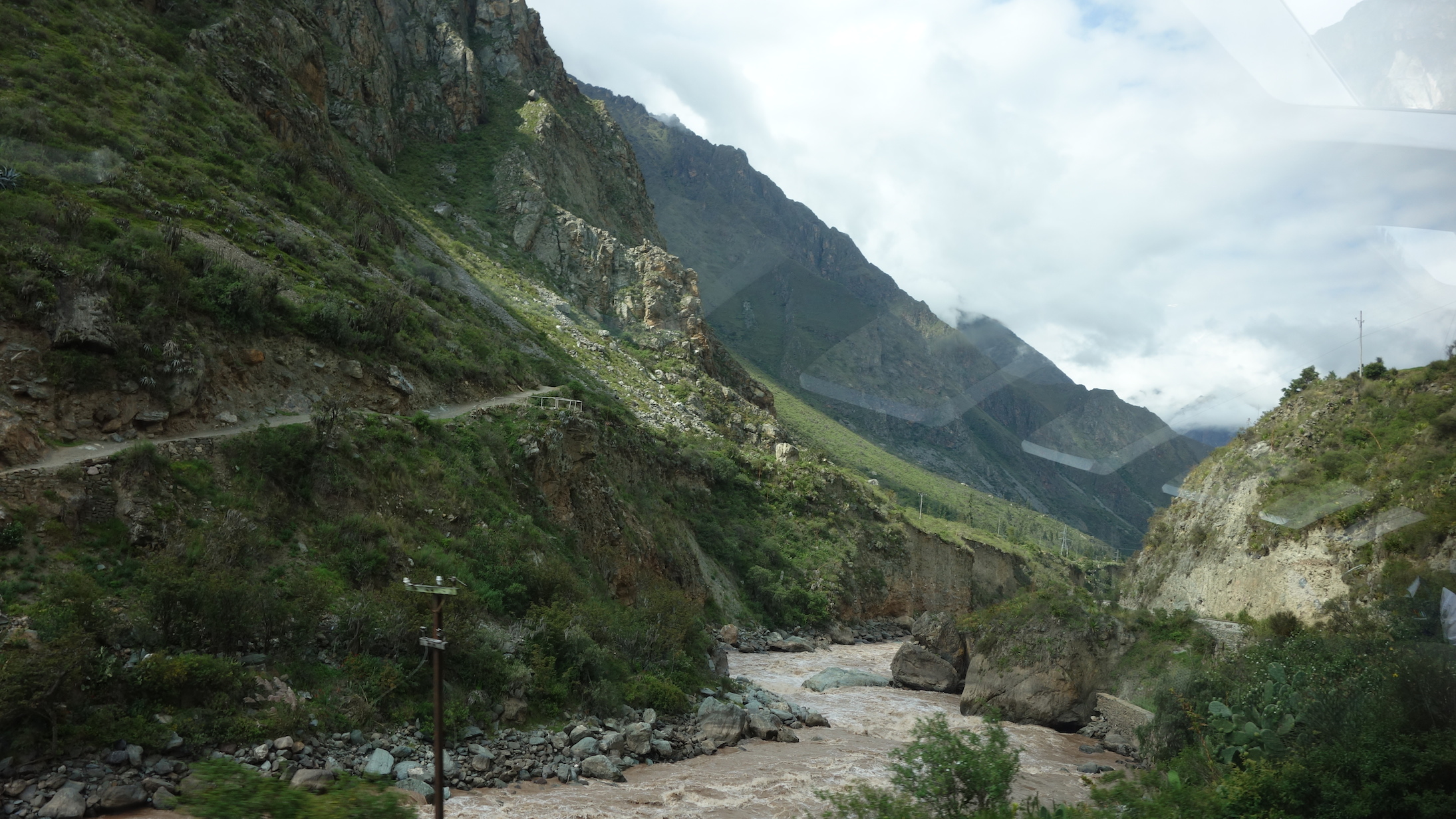
The train lets off in a small town called Aguas Calientes, which is only accessible by train… We were in a place… that no roads can take you…
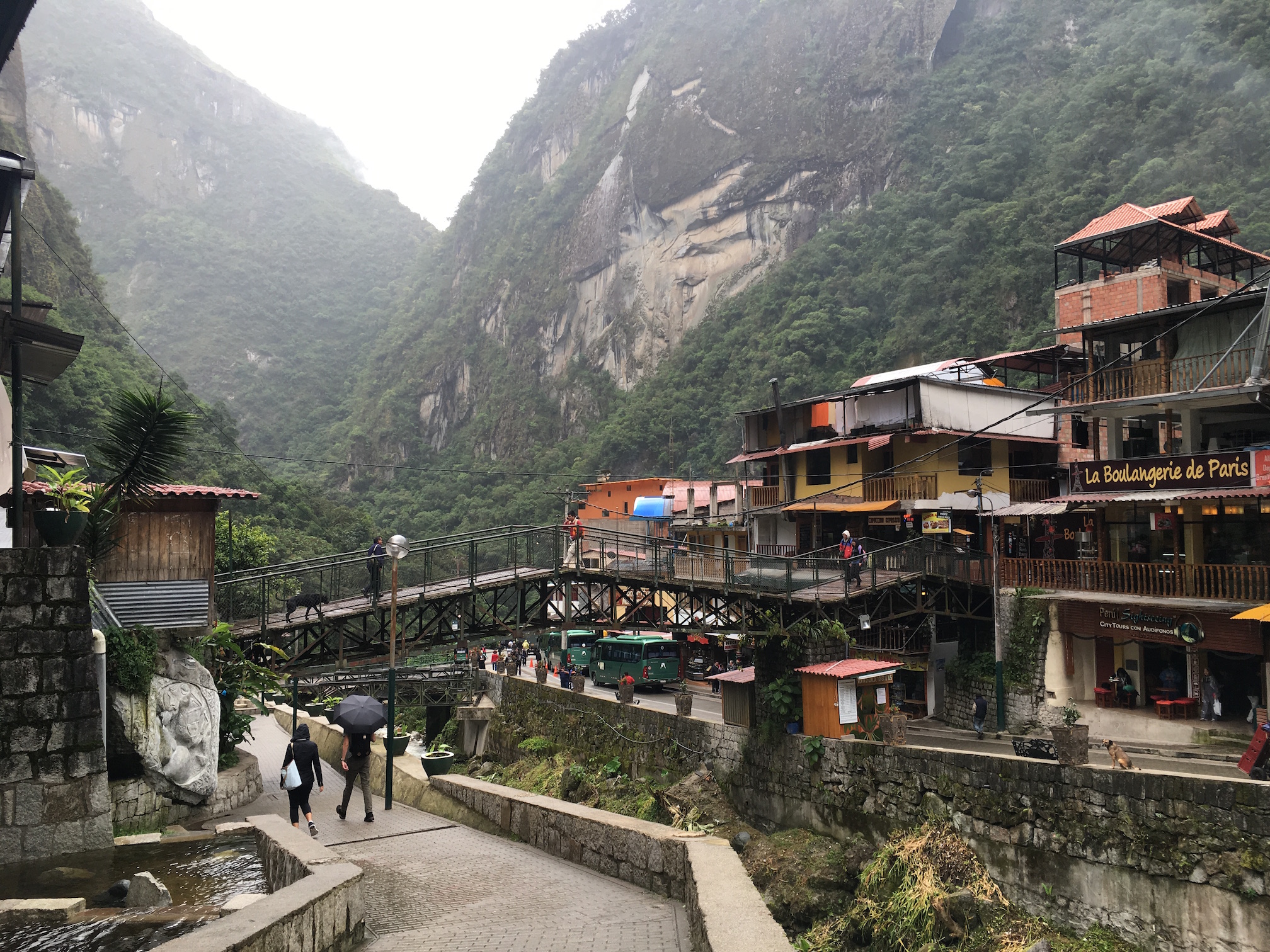
The bus up to Machu Picchu is a crazy, a winding haul that alternates between views of a beautiful, steep gorge and images of your entire life and loved ones flashing rapidly before your eyes. Back and forth, up the mountain.
When we arrived we sprinted through the entry gates and ran through Machu Picchu proper in a blur, because we had bought entry tickets to Huayna Picchu and our entry time was fast approaching. Huayna Picchu is limited to 400 people per day, because it’s so steep and treacherous that to allow more people would be dangerous. HP was an hour-or-so hike that was fairly arduous, narrow, and steep. Lots of stairs, not much space to pass oncoming hikers on their way down. We toughed it out and were damn glad we did. The view from the top was insane (HP is the mountain you usually see in the background of Machu Picchu photos). The rolling mist would completely block your view for one minute and the next minute disappear to reveal a paraglider’s-eye view of the entire Machu Picchu site. The perspective of the towering green mountains from that vantage point was absolutely cinematic. Definitely worth going to Huayna Picchu if you get the chance and can handle a pretty hearty hike.
Afterwards, we got some lunch and some rest before heading back in to check out Machu Picchu. Maybe to a fault, Franklin and I tend to be a little resistant to landmark tourist destinations. However, we’ve been reminded – several times now (see: Taj Mahal) – that a lot of the time they are world famous for a reason.
“Yeah… This is the coolest place I’ve ever been.” – Franklin
Machu Picchu is one of the few places I’ve been that plainly cannot be captured properly through a camera lens. It isn’t so much that it looks different than the photos, it’s just that the scale and scope and perspective are what make the place so impressive. I’ve seen dozens of the same shot of Machu Picchu on social media: some grinning dork acquaintance of mine posing in front of what seems like a pretty view of some cool ruins (just scroll up to see grinning dork photo of yours truly). And that’s what the view is; it is indeed a pretty view of really cool ruins. But the cascading emerald mountains that surround you in every direction, touched by moving strokes of misty gray clouds, and the muddy river so far below you that it looks like a miniature diorama, are what makes this place feel like nowhere else I’ve been.
Oh yeah, and the ruins too. The ruins themselves would be impressive even if they weren’t lodged in the crevice of heaven. There are huts, temples, open fields, astronomical observatories and instruments, and agricultural terraces. As a history nerd, walking through the town, which is not all that big, was fascinating from a bookish perspective. But what struck me more was an emotional curiosity. I kept thinking: holy shit, people lived up in this little green cradle in the clouds… what the hell would that be like? To have your mind shaped and cultural philosophy molded here. How thoughtfully and emotionally, for hours and years, they must’ve looked at those slopes across the way, or at the stars, which must be brilliant and plenty at night, and at the river below, intermittently blocked by the smoke of the clouds. This environment, which so impressed me in a few hours, was a home. Lest we forget that little curiosity. And what a beautiful home! To look at it as a home was something different, because home is profoundly important and reflective of us all.
